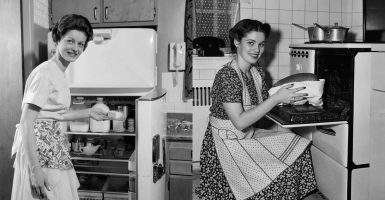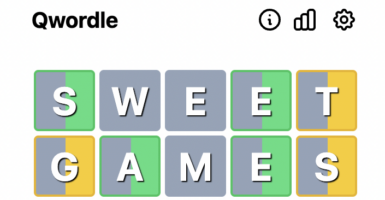Photos Of The Great Depression That Give You A Look You’ve Never Seen
Although it took place nearly a century ago, the Great Depression still looms large in any discussion of American history.
Starting in 1929 and dragging on through most of the 1930s, the Great Depression had profound effects on Americans from all walks of life.
Al Capone started a soup kitchen.
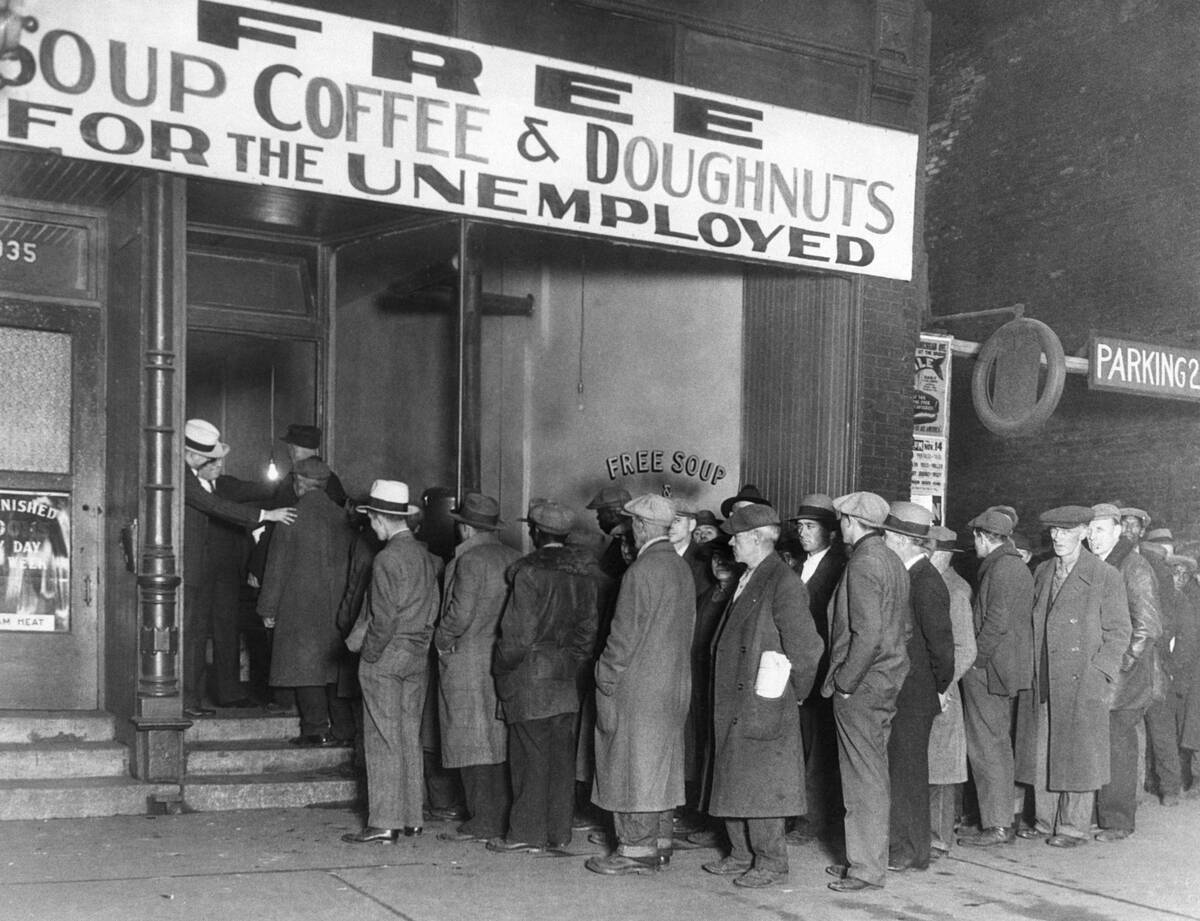
Notorious gangster Al Capone started up “Big Al’s Kitchen for the Needy” in Chicago during the Depression.
While the gesture provided hungry Chicagoans with food, it was done more to rehabilitate Capone’s image than as a genuine gesture of goodwill.
Banks collapsed in an instant.
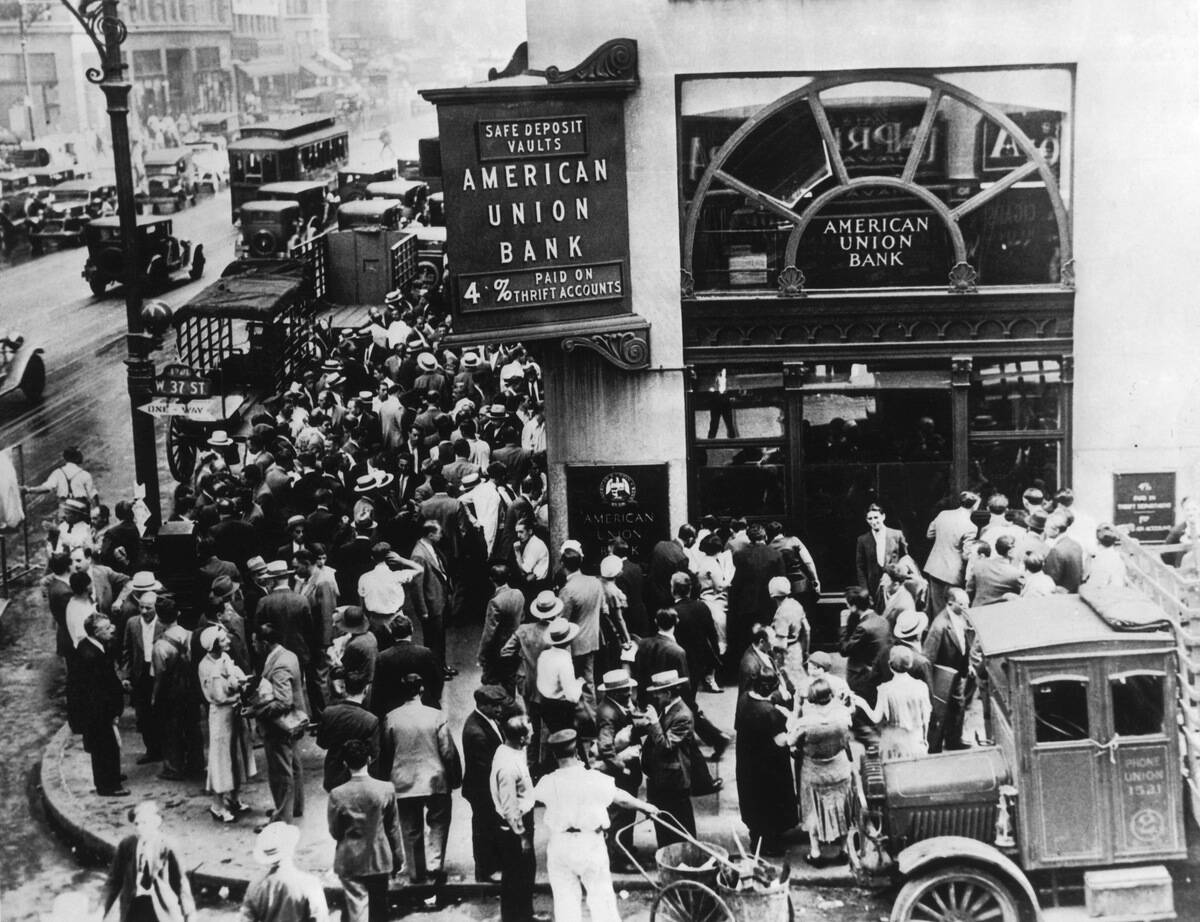
The Great Depression was more than just a bad day on Wall Street — it was a full-blown economic disaster.
For many unfortunate Americans who failed to withdraw their savings before banks collapsed, personal fortunes disappeared in the blink of an eye.
This was a particularly valuable transaction.
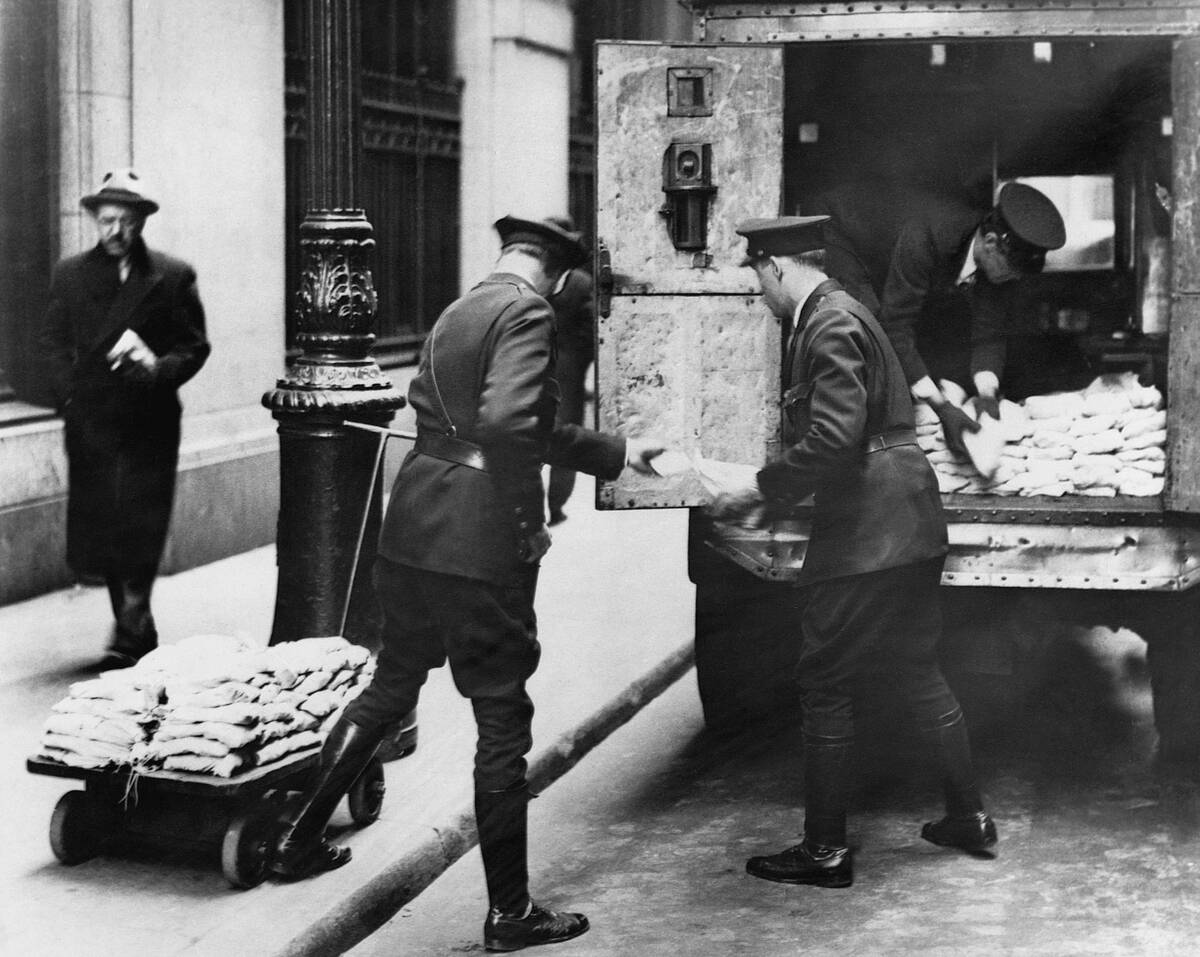
The 1930s equivalent of a Brinks truck can be seen here, as police officers unload a large shipment of gold coins at the Federal Reserve Bank under heavy guard.
The shipment was reputed to be valued at six figures or more — a significant amount of money in any era, particularly during the cash-strapped Great Depression.
Families sought better fortunes elsewhere.
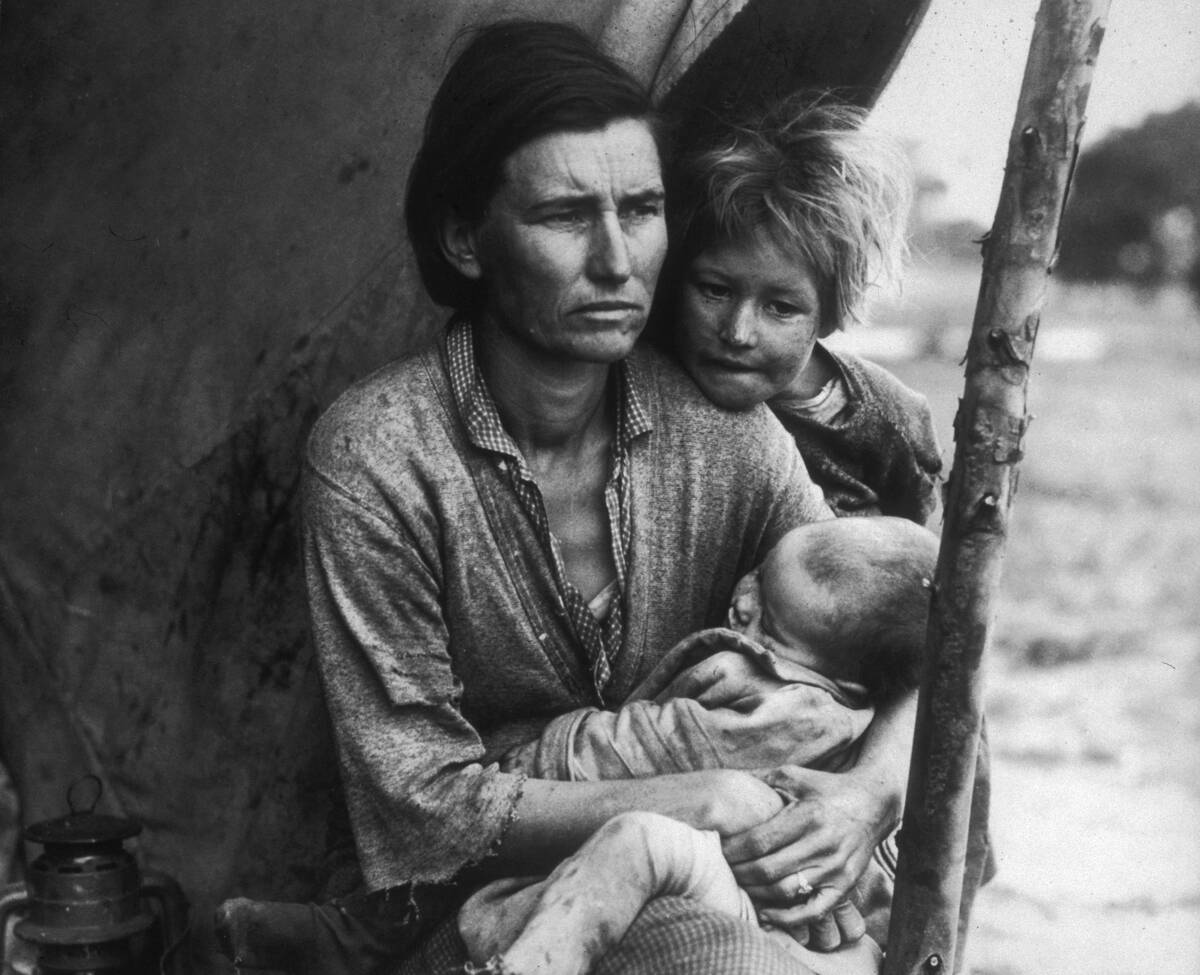
Iconic photographs like this one taken by Dorothea Lange help capture the anguish and despair of the era.
The Depression had wide-ranging migratory impacts, from “Okies” who left the Dust Bowl to seek their fortune in California, to African-Americans who left the south to settle in northern cities.
People sold whatever they had.

The Depression affected nearly everyone, but the first people to feel the impact were the speculators who worked on Wall Street.
This photo shows a Wall Street speculator who’s desperately trying to sell his car — his only possession of value — after losing all of his money in the stock market crash.
Life in the Dust Bowl was bleak.
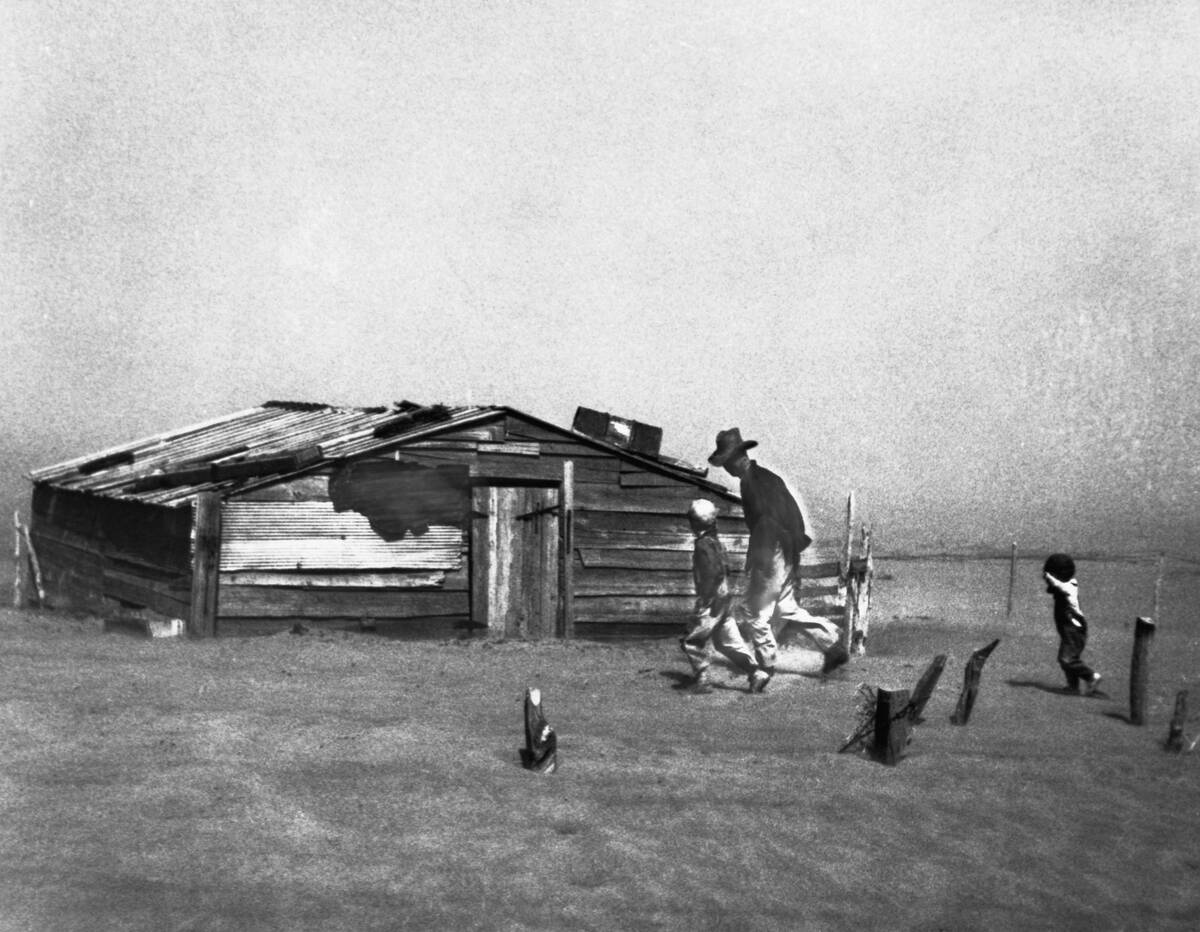
A devastating drought, paired with poor ecological practices that saw farmers ripping up the native grasses and plants that held the soil together, combined to create the Dust Bowl of the 1930s.
Farmers in southern states saw years of crops ruined by Dust Bowl conditions. Their health suffered as well, since the dust, dirt, and other particulate that was whipped up by the wind wound up in their lungs.
Bread lines and soup lines were commonplace.
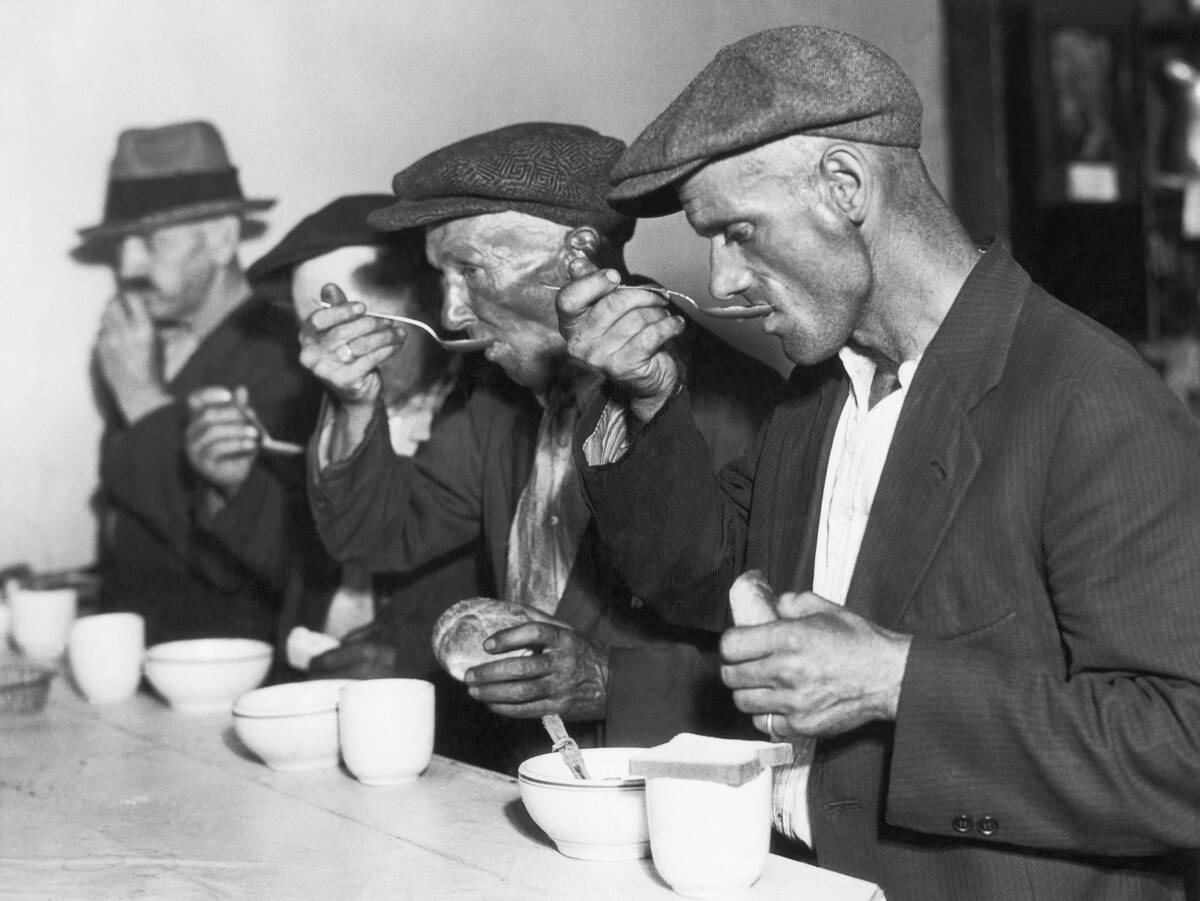
The stock market crash caused ripple effects throughout the entire country, and left millions of Americans hungry and desperate.
Bread lines, soup lines, and charitable endeavors helped provide destitute Americans with food to eat and shelter to stay in.
The economy was already shaky.
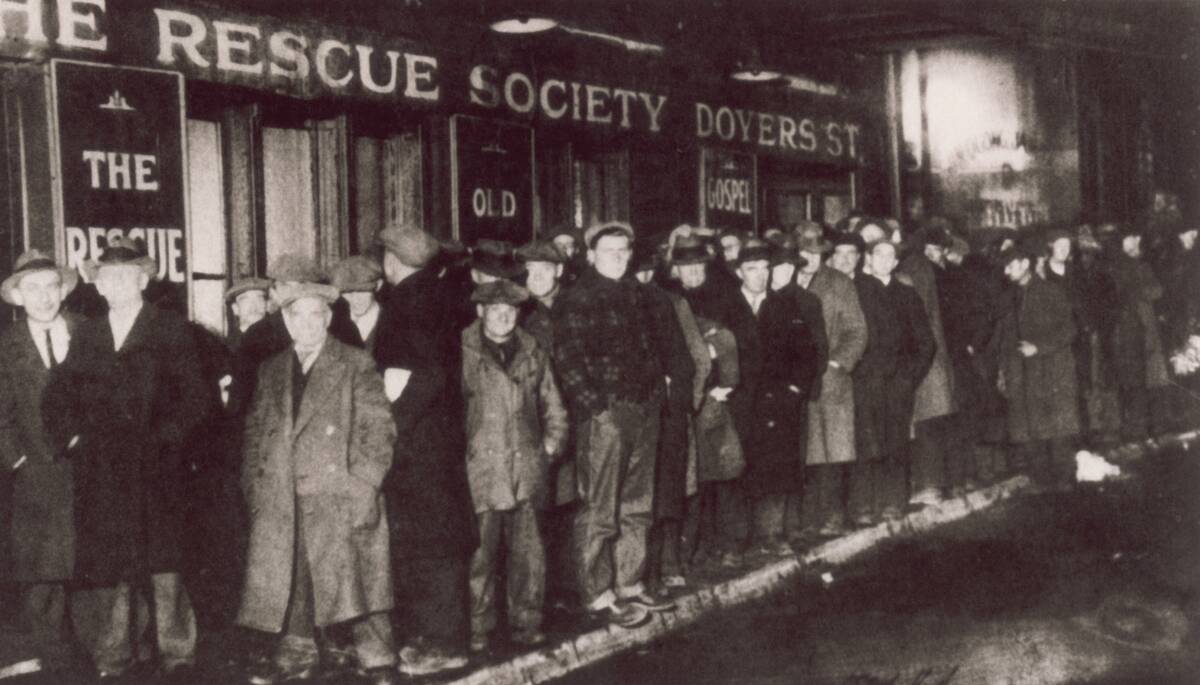
While the 1929 stock market crash officially kicked off the Great Depression, it’s likely that some sort of recession would have happened either way.
The economy was already in rough shape, with struggling farmers, overproduction in the industrial sector, and a severe wealth gap.
People supported themselves however they could.
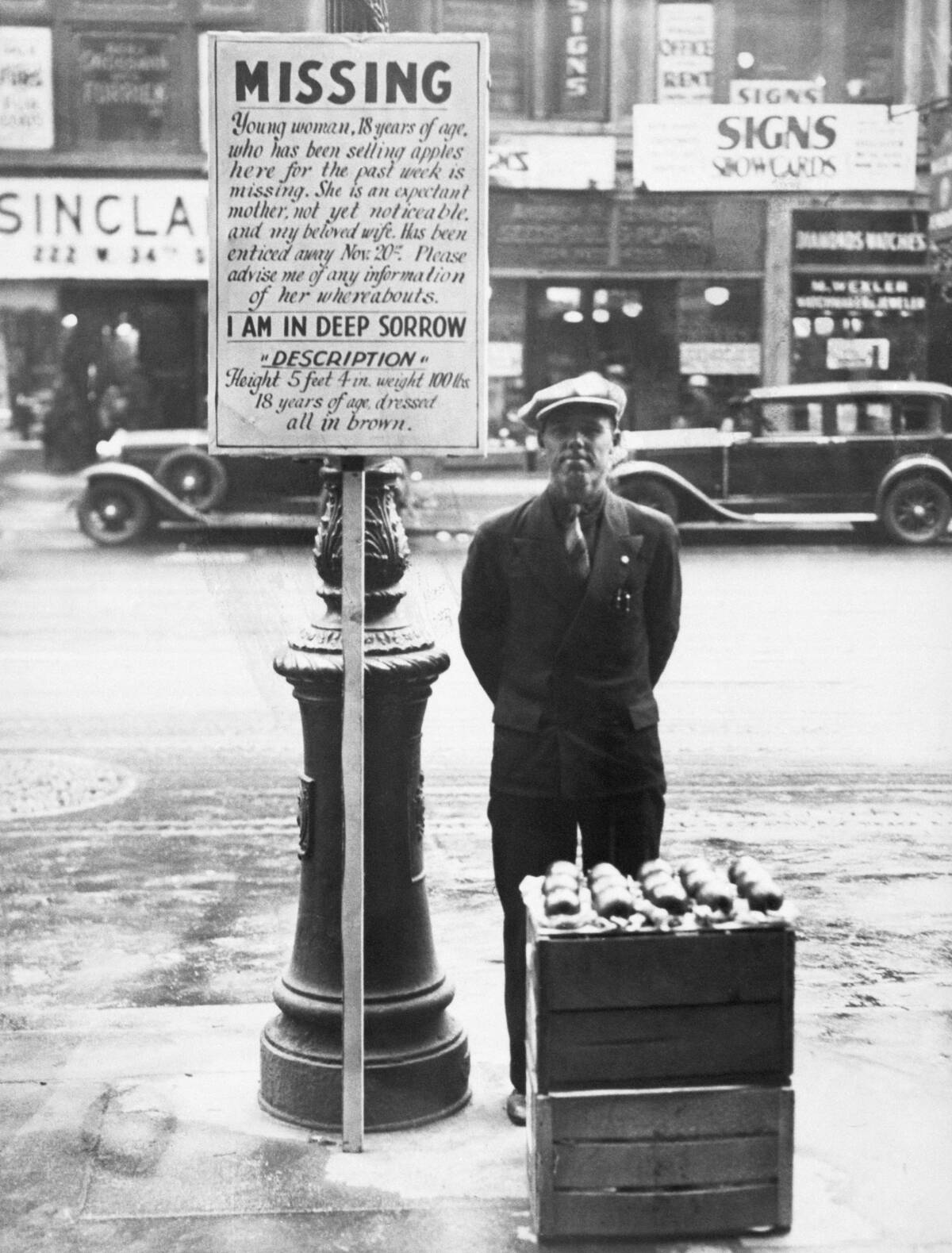
This photo was snapped on 8th Avenue in New York and shows a man simultaneously trying to accomplish two things: His sign seeks the whereabouts of his missing wife, while the crate in front of him is full of apples for sale.
While the income brought in by his apple sales would be better than no income at all, this man is still in a very precarious situation.
There just weren’t any jobs.
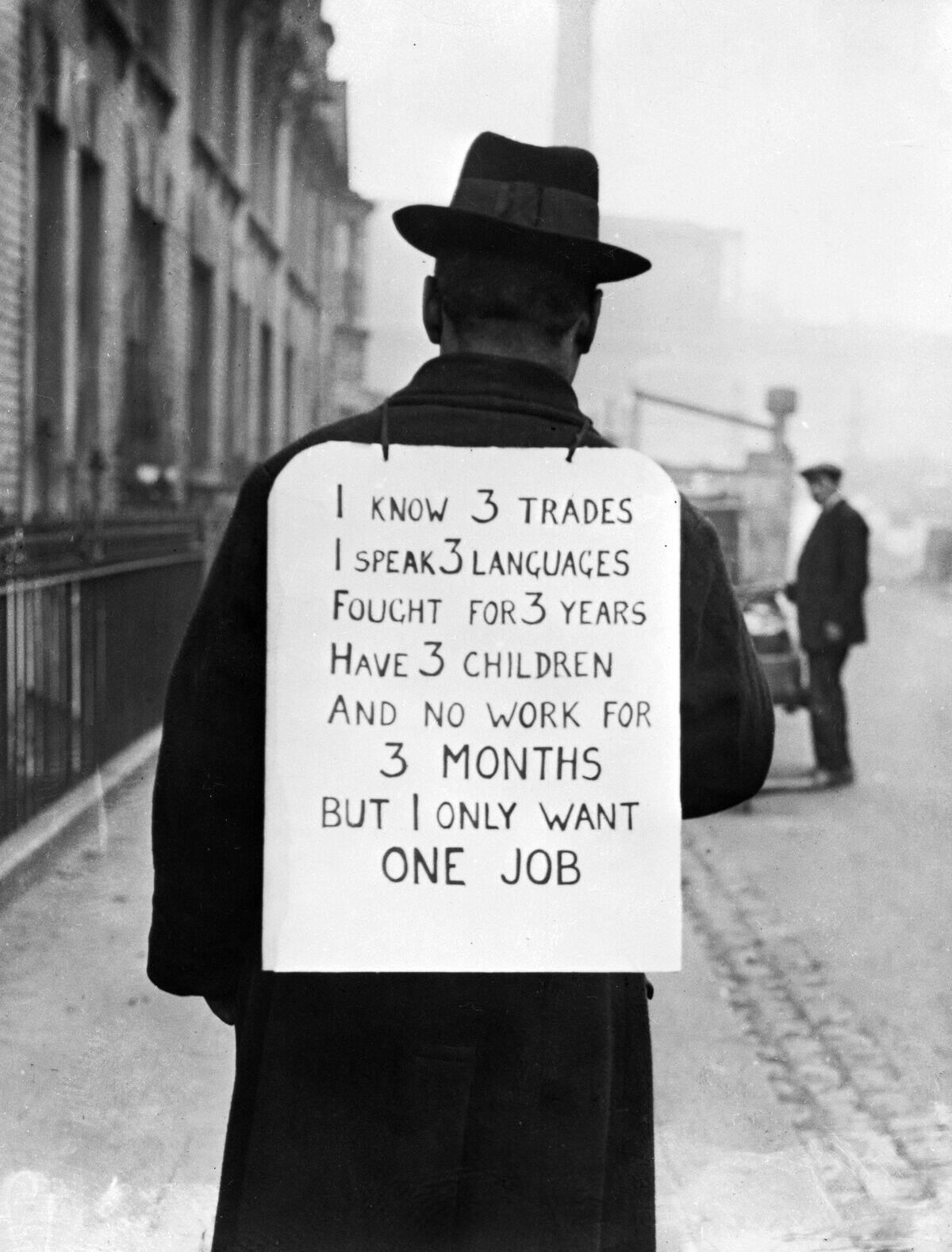
One major downside of a free market is that when the market crashes, it can’t afford to pay people to do their jobs.
Signs like the one worn by this man were typical of the era, where skilled people found themselves not just jobless but unemployable in the blink of an eye.
Buying on margin was a bad idea.
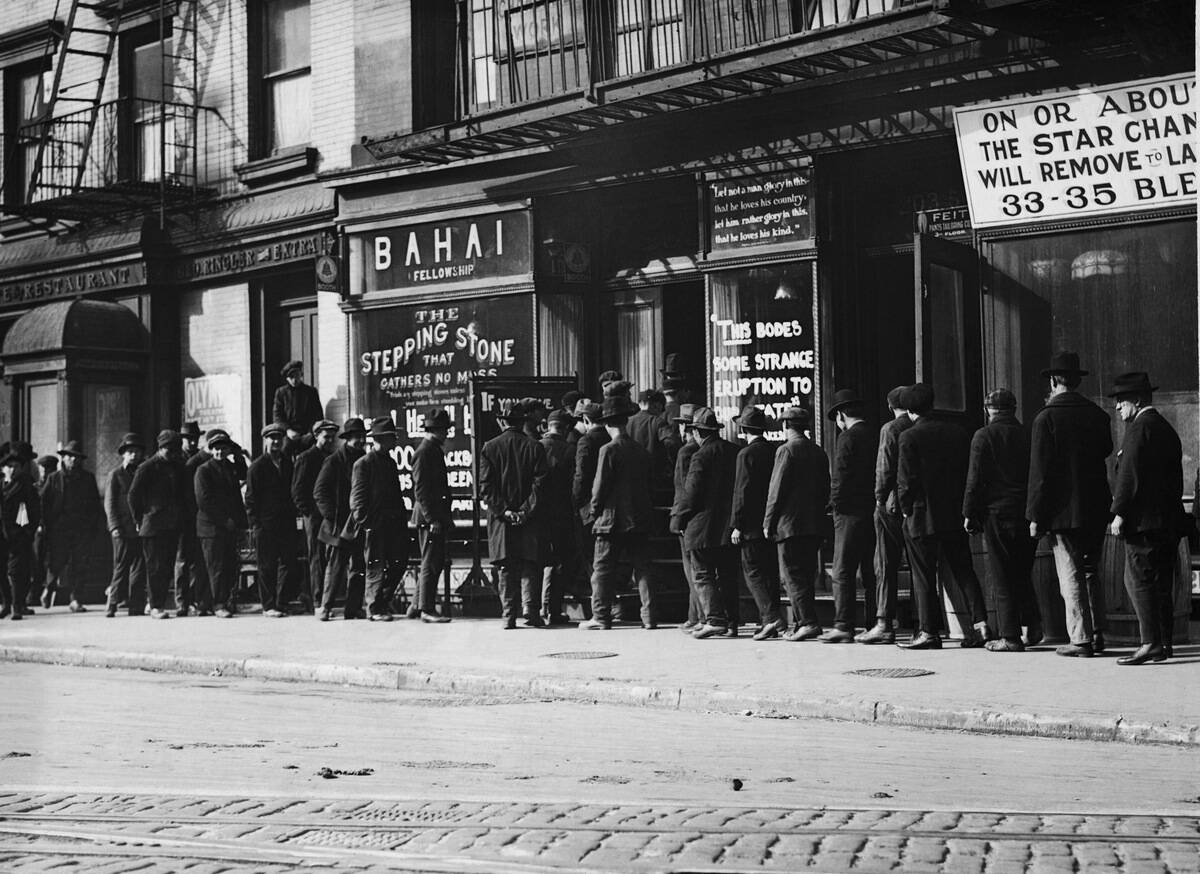
Much of the stock market was supported by investors and speculators who bought on margin, which means they borrowed money to invest.
Of course, when prices tanked, this meant that investors couldn’t pay back what they owed, which caused the entire system to crumble.
Unemployment was rampant.
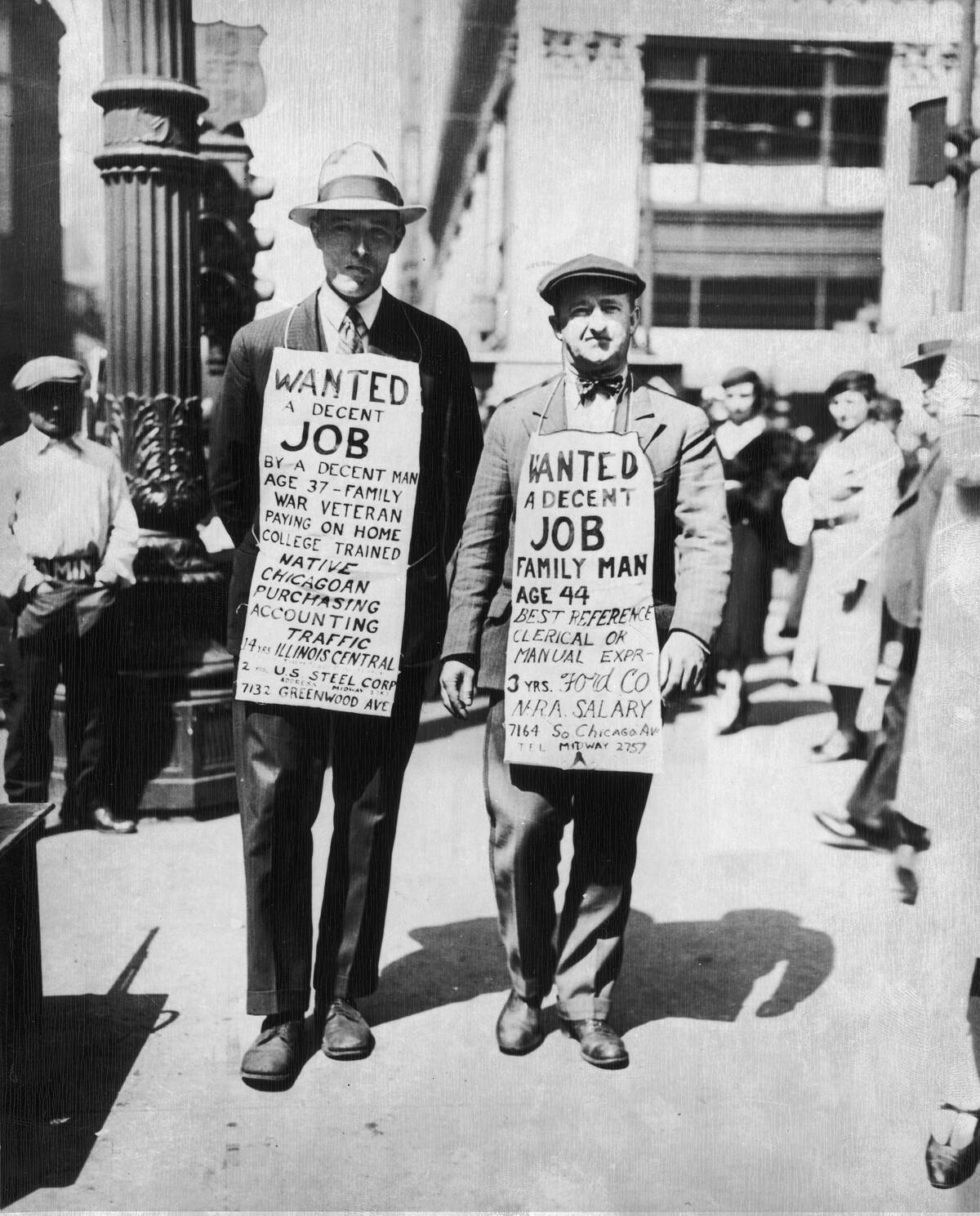
At the peak of the Great Depression, around one in four Americans were out of work, meaning that a full quarter of Americans had no means to feed their families.
This level of mass unemployment led to huge lineups at bread lines and soup kitchens as desperate people sought out nourishment.
The Dust Bowl made things worse.
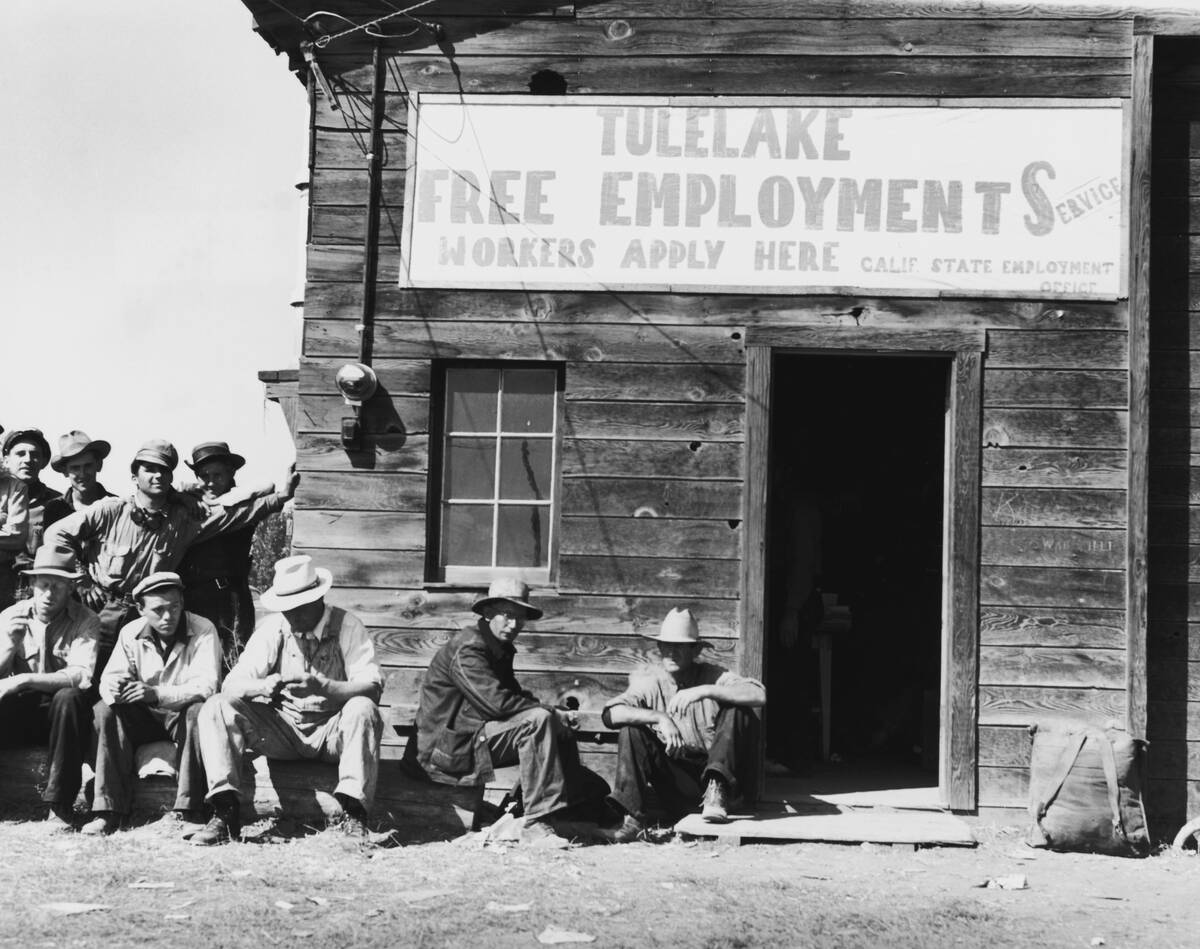
Owing to poor farming practices and a series of devastating droughts, the Dust Bowl turned the Great Plains into an arid desert, replete with dust storms that blacked out the sun.
John Steinbeck’s depictions of “Okies” leaving the Plains for California stems from these dark days.
Communal meals were common.
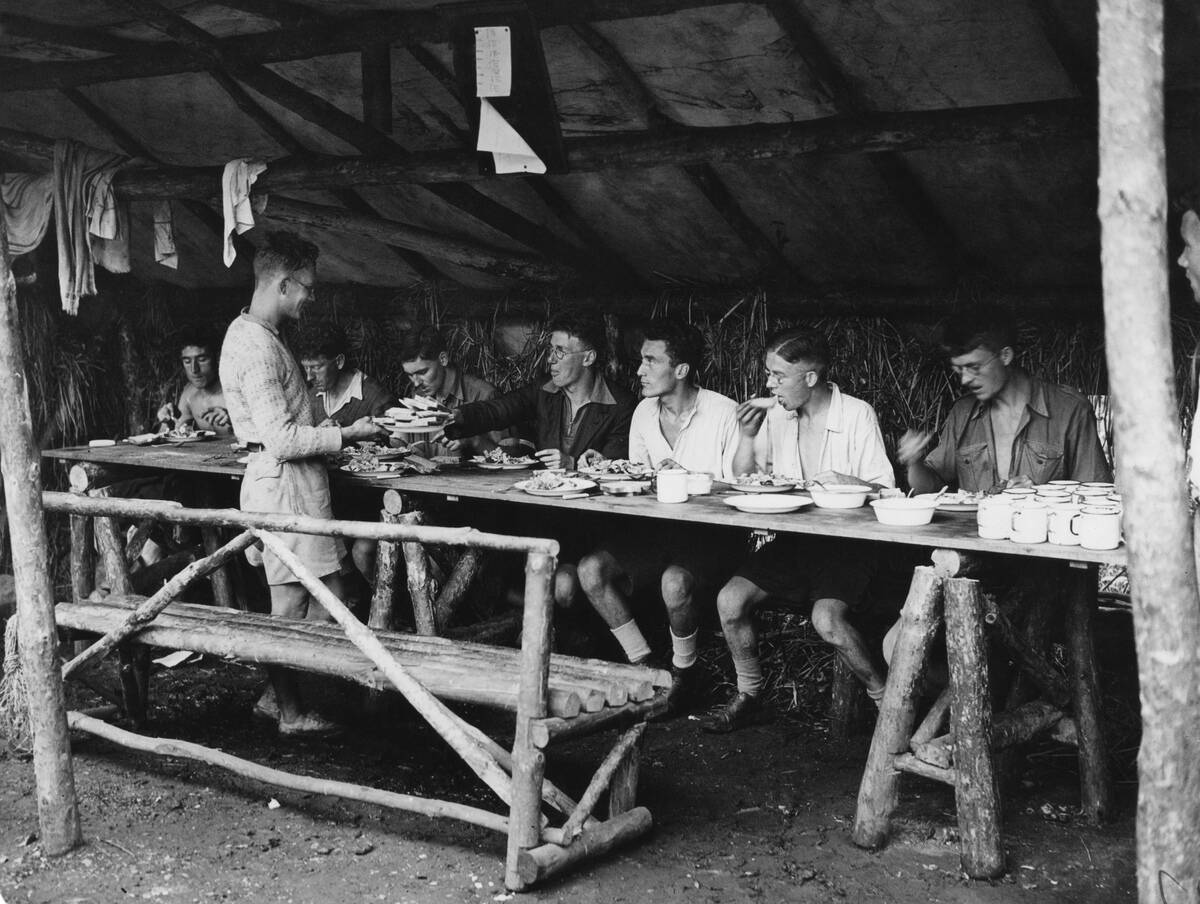
People who are down on their luck tend to become accustomed to eating in large groups, as this is how soup kitchens tend to function.
This photo of mealtime at a rough-hewn outdoor camp is somewhat unique in that it was taken in England. While many photos of this era show hardships in the United States, the Depression’s effects were felt on the other side of the Atlantic as well.
Even the rich weren’t totally safe.
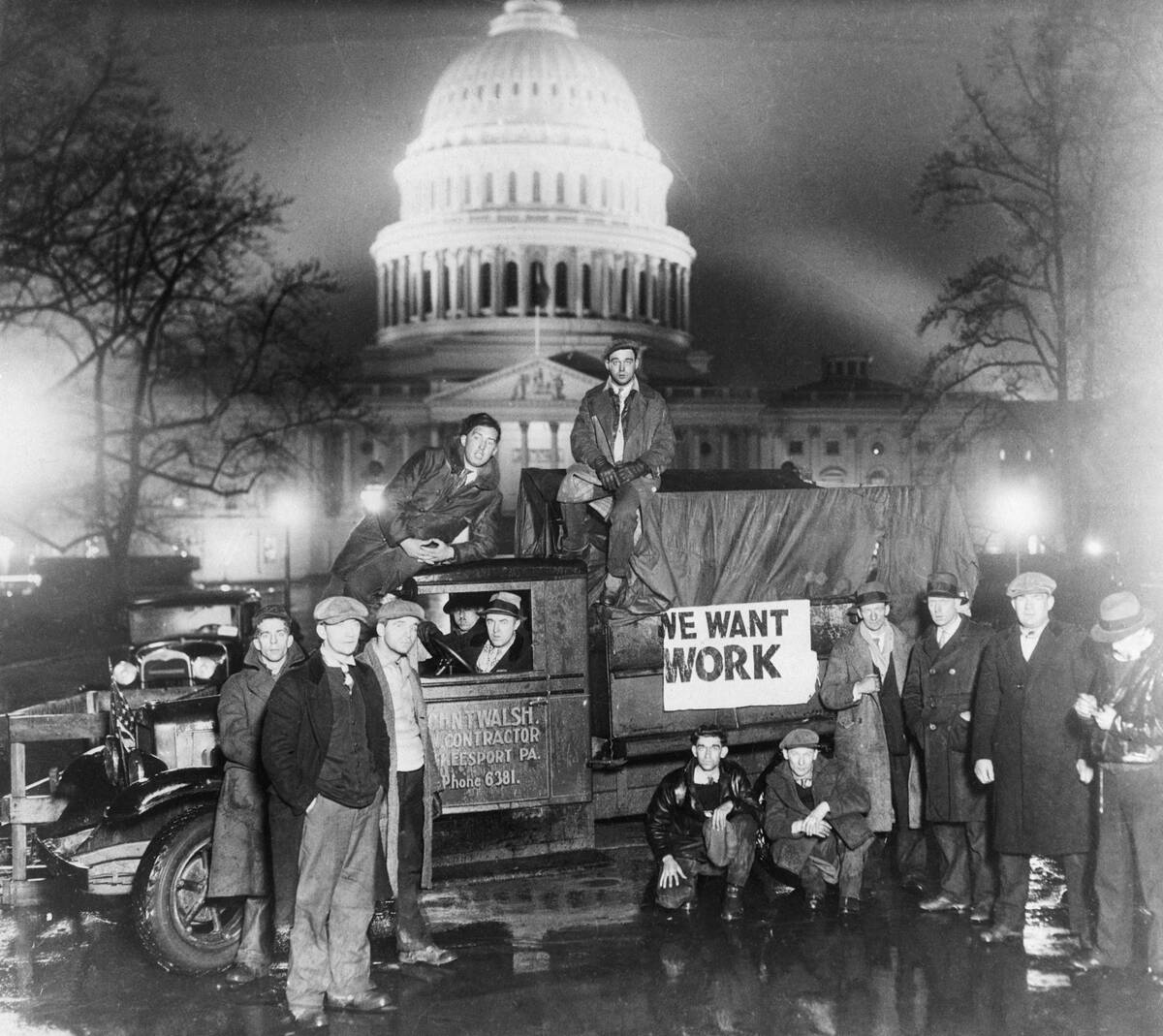
Wealthy Americans were largely insulated from the worst effects of the Great Depression, but they still took a hit.
While the richest of the rich were able to maintain their fortunes, many people with slightly less money lost their entire fortunes and were forced to start over.
The president encountered a lot of criticism.
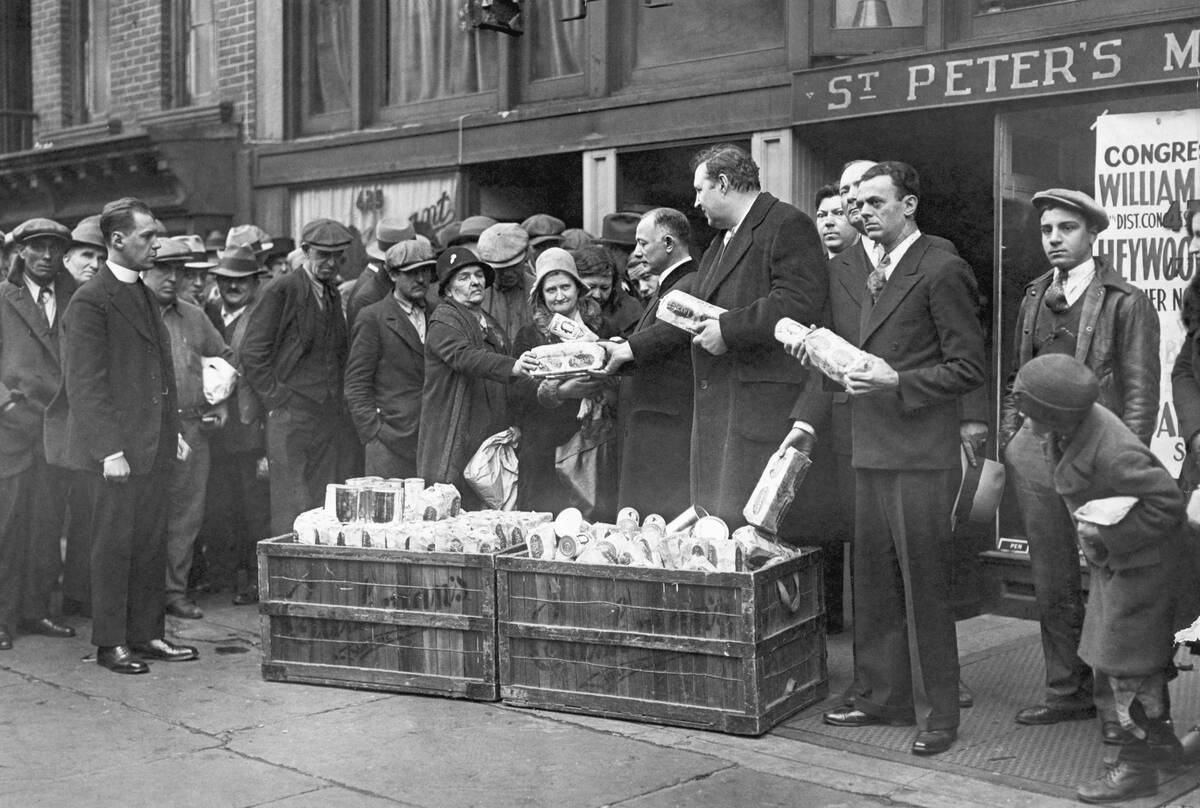
Herbert Hoover, the president during the worst days of the Great Depression, became a magnet for criticism.
Believing that the economy would fix itself without significant government intervention, Hoover was slow to act, which made him enormously unpopular.
“Hooverville” became part of the vernacular.
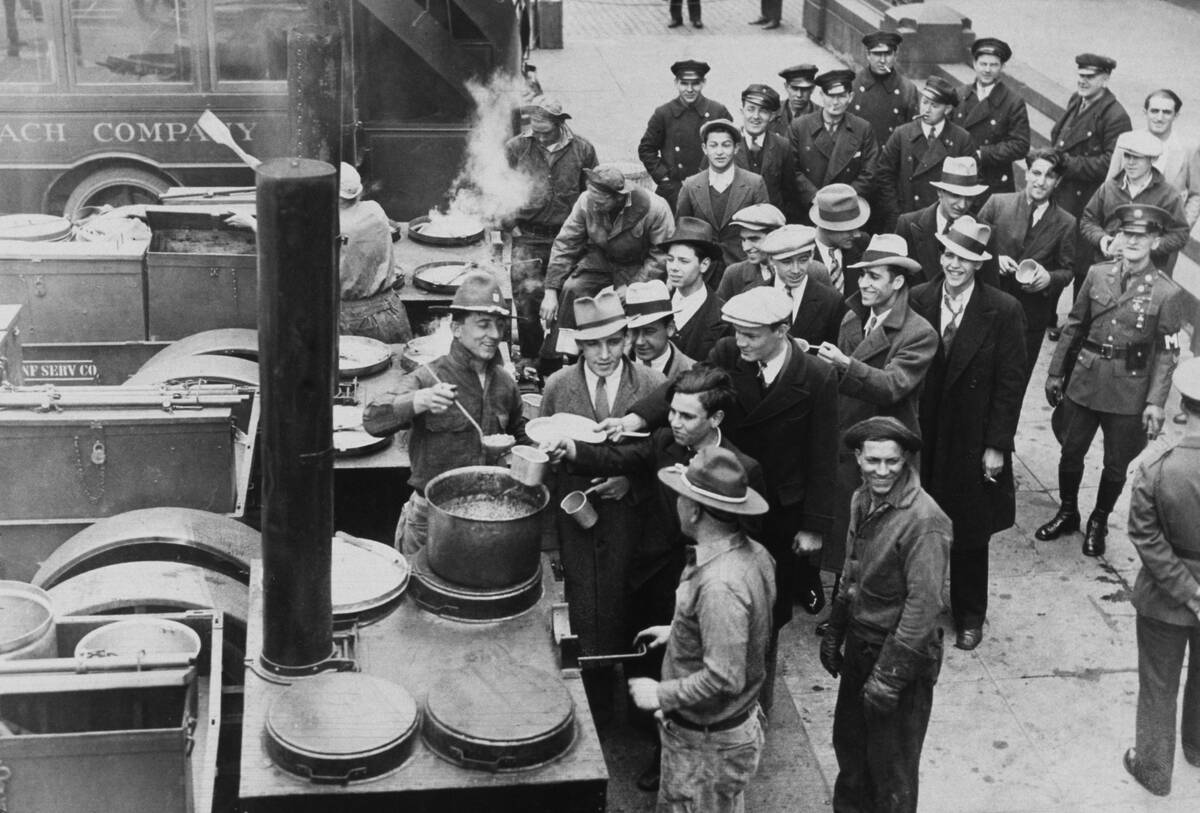
Homeless encampments sprung up across the nation, as people forced out of their homes were forced to live in shacks and tents.
These encampments were known derisively as “Hoovervilles,” named after the unpopular president.
Various industries continued to function.
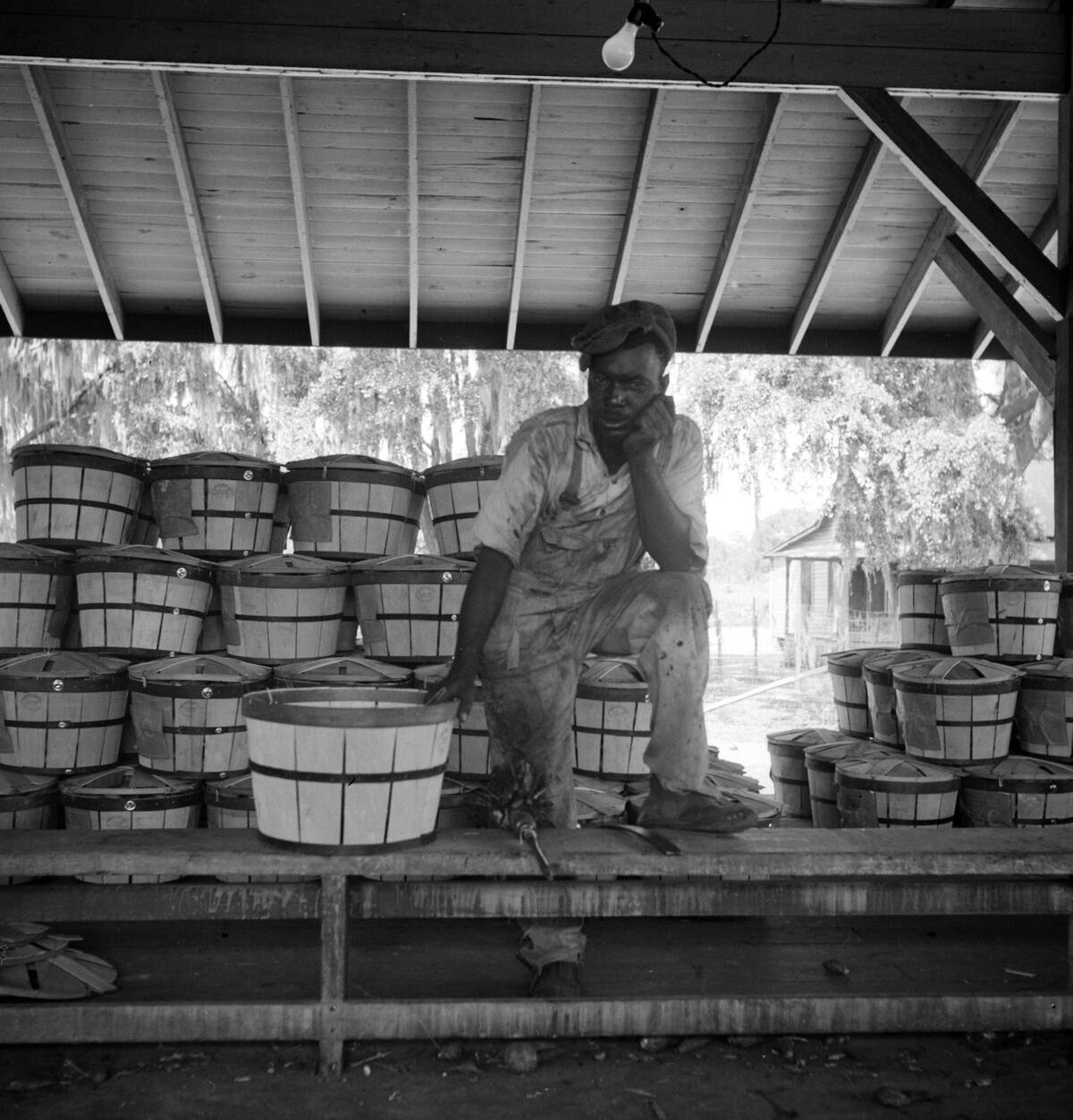
This migrant worker, photographed in northeastern Florida in 1936, is sorting through piles of baskets to be used in the Florida fruit harvest.
Workers like this have historically dealt with harsh conditions, and the Great Depression would have made things harder still. That said, photos like this prove that states would continue exporting any goods they had.
Hoovervilles sprung up everywhere and anywhere.
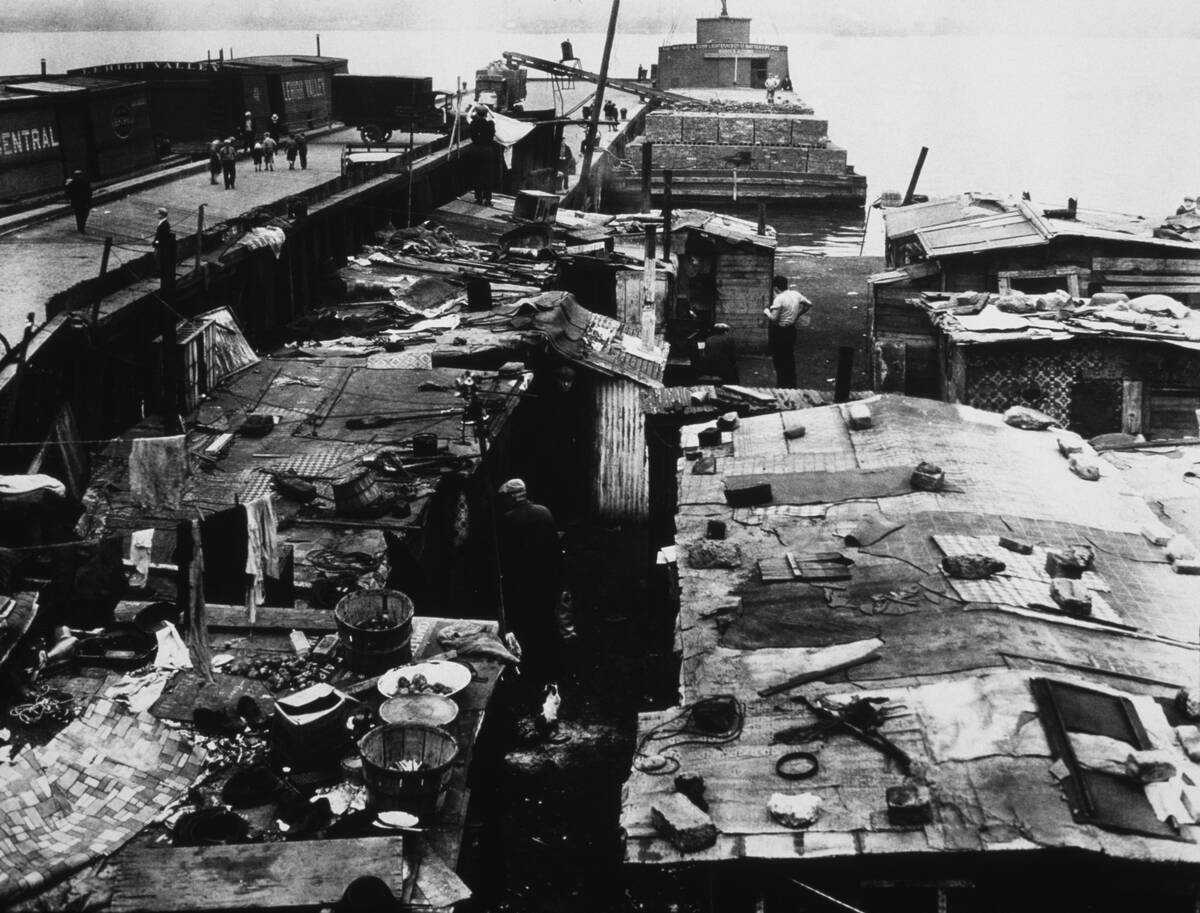
The “Hooverville” shantytown of the Great Depression was hardly an example of a master-planned community, and as such, Hoovervilles tended to pop up anywhere with a large concentration of unemployed workers.
This Hooverville was built by homeless men next to a port area. Although the photo caption doesn’t definitively state that these men were former dockworkers, it seems like a safe assumption.
The New Deal started to change things.
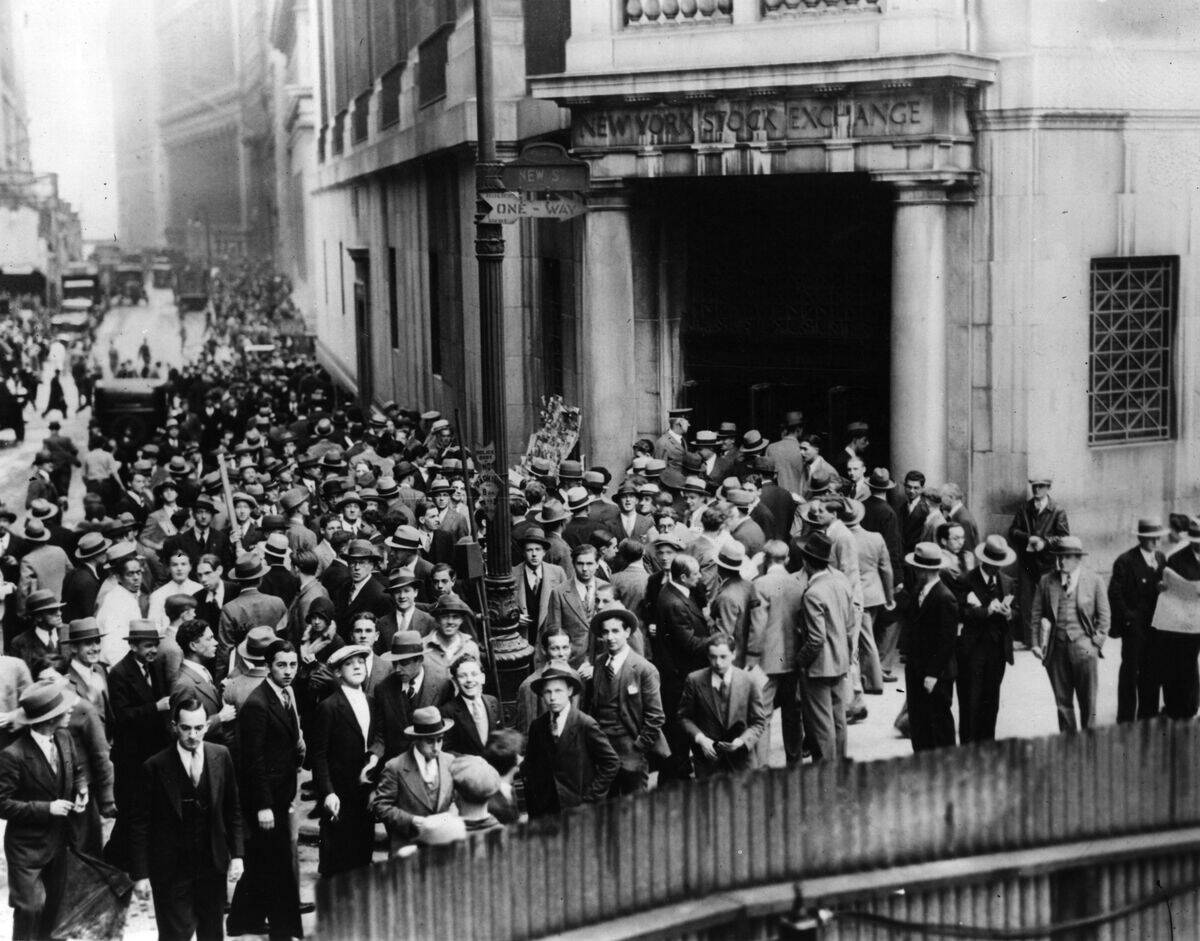
After Franklin D. Roosevelt was elected president, he proposed a series of sweeping reformations to get the country back on track.
Chief among these was the New Deal, which included programs like the Civilian Conservation Corps. These programs created work for unemployed Americans.
It was a transformative change.
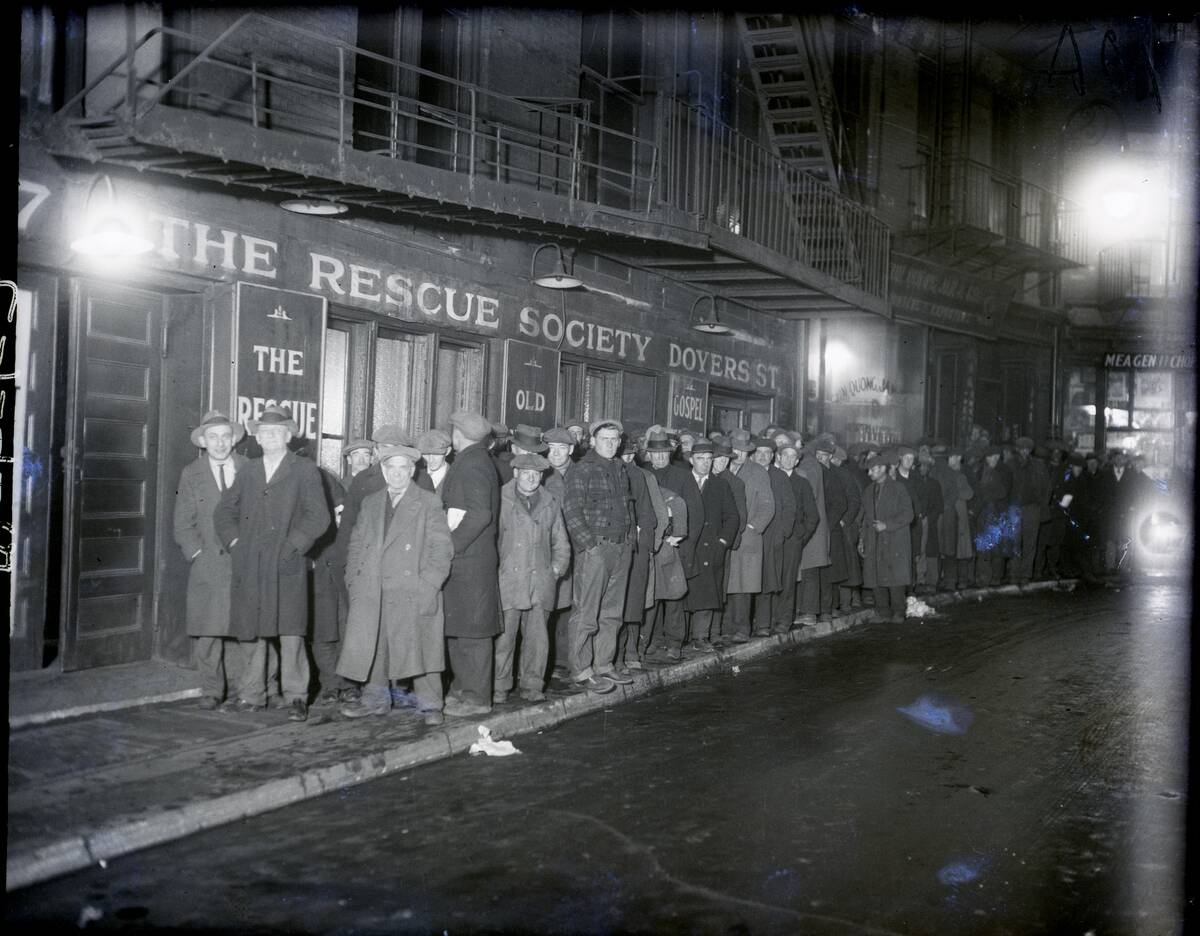
Another new deal initiative, the Works Progress Administration (WPA), created major infrastructure like roads, bridges, and schools — many of which still exist to this day.
The program even allotted a budget for artists and writers to document American history.
It was a time for great art.
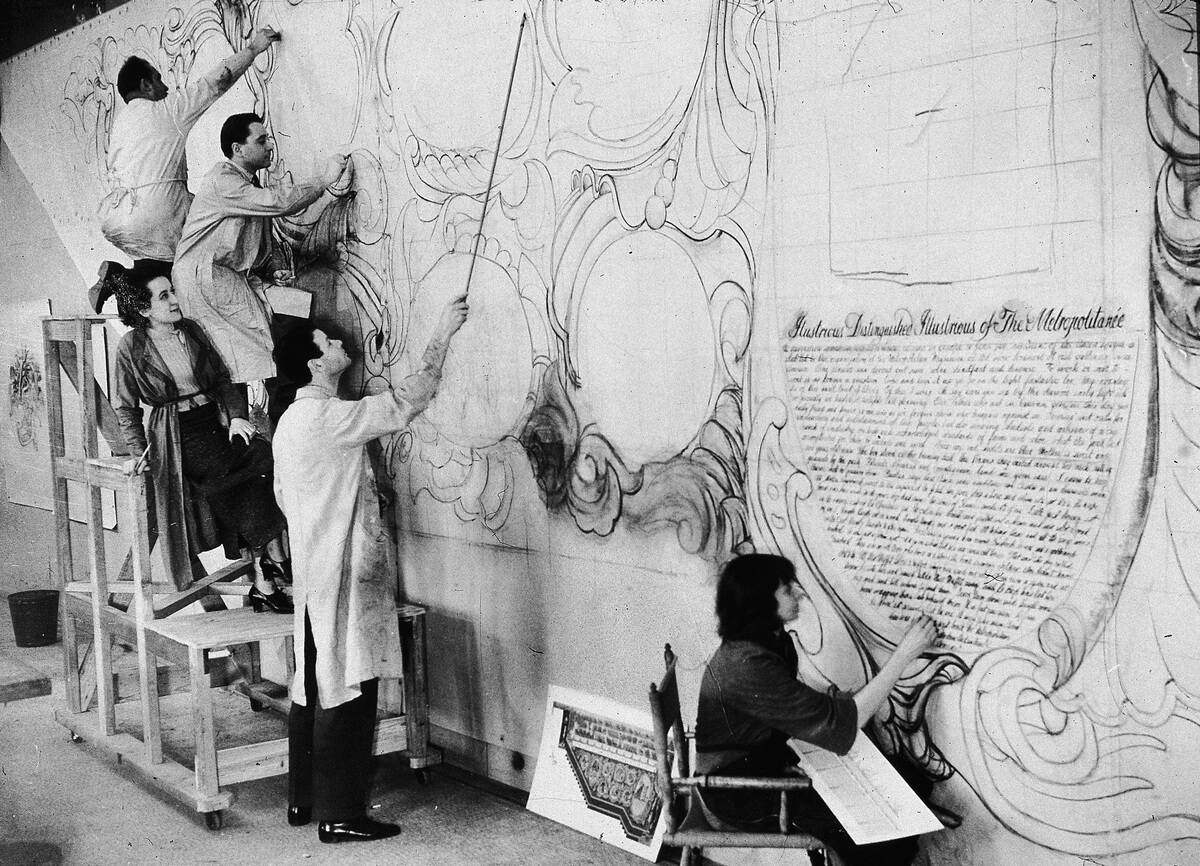
Tough times tend to lead to expressions of creativity, and this was undoubtedly true during the Great Depression. In fact, FDR’s New Deal directly called for artists once it got underway in earnest.
This image shows artist Allen Saalburg as he directs a team of painters who are working on murals for the Arsenal Building in New York’s Central Park.
Social security stems from the Great Depression.
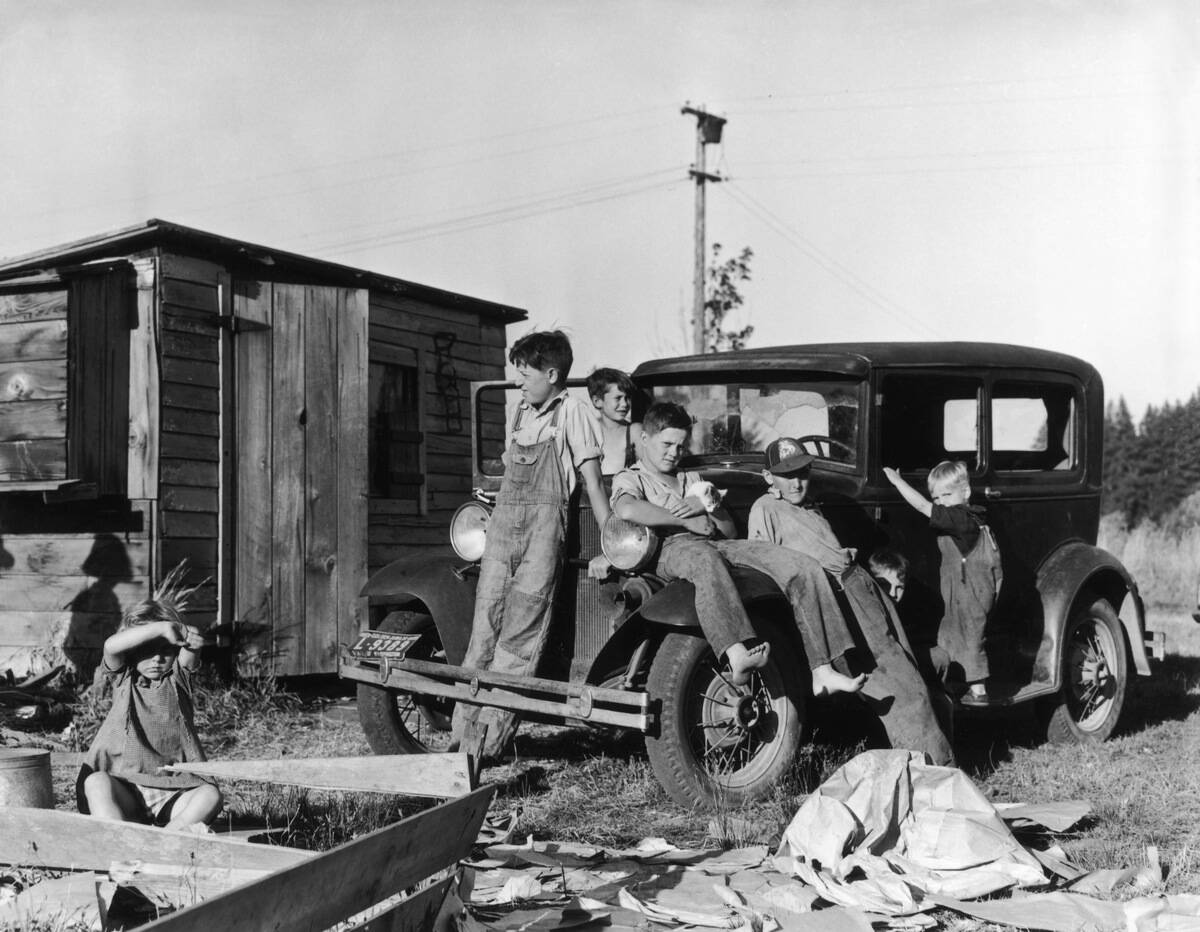
Before 1935, people didn’t have Social Security numbers. But after FDR signed it into law in 1935, it became a safety net for Americans.
The original purpose of social security was to provide financial help for the elderly, unemployed, and disabled — and it still strives to meet these goals today.
Violence was in the air.
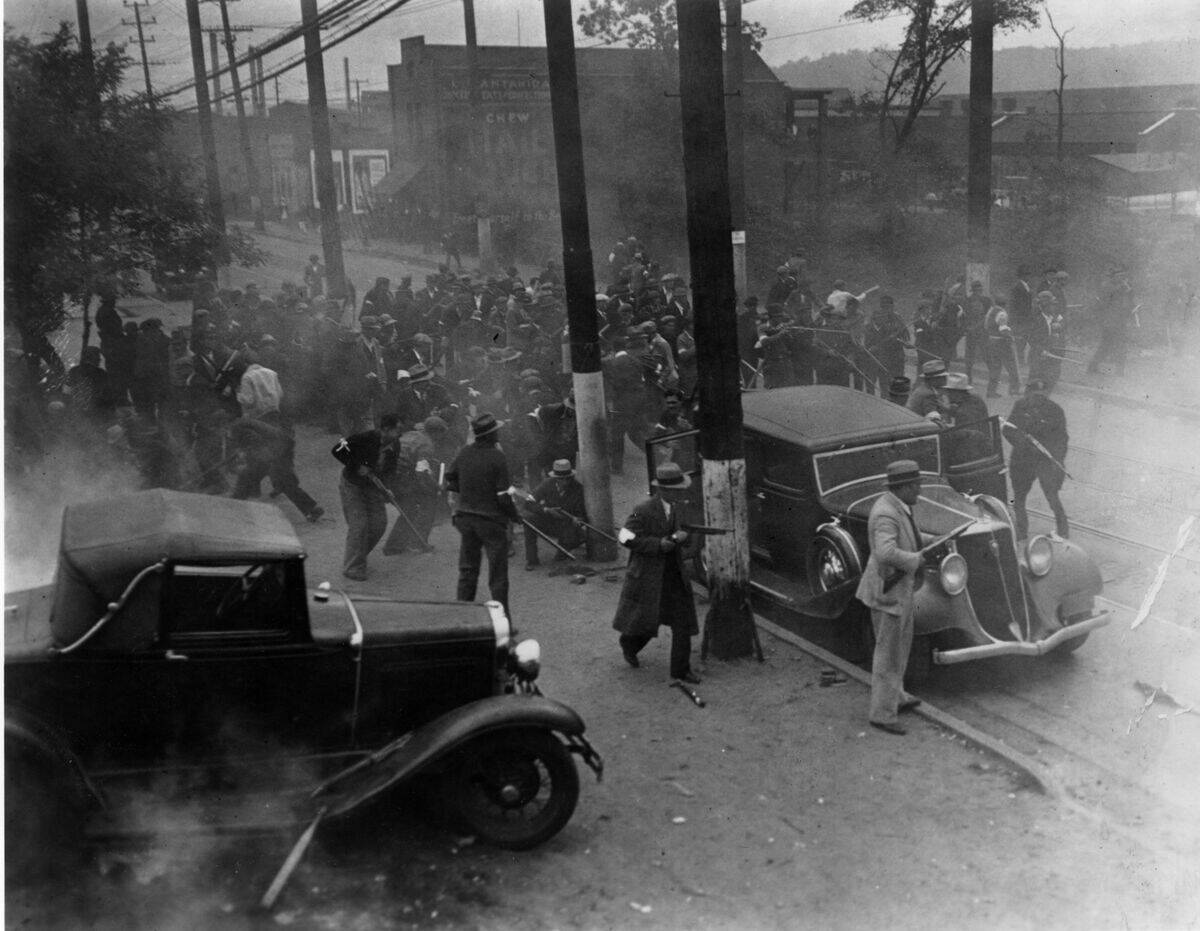
Early in the Great Depression, some companies attempted to alleviate their financial issues not by firing or laying off workers, but by freezing their pay — a development that predictably led to strikes.
As was relatively common in strikes during the early 20th century, violence could often erupt. This photo shows the chaotic scene outside of the Sprang-Chalfont Seamless Tube Company in Cambridge, Pennsylvania, as striking workers clashed with police.
Banks needed an overhaul.
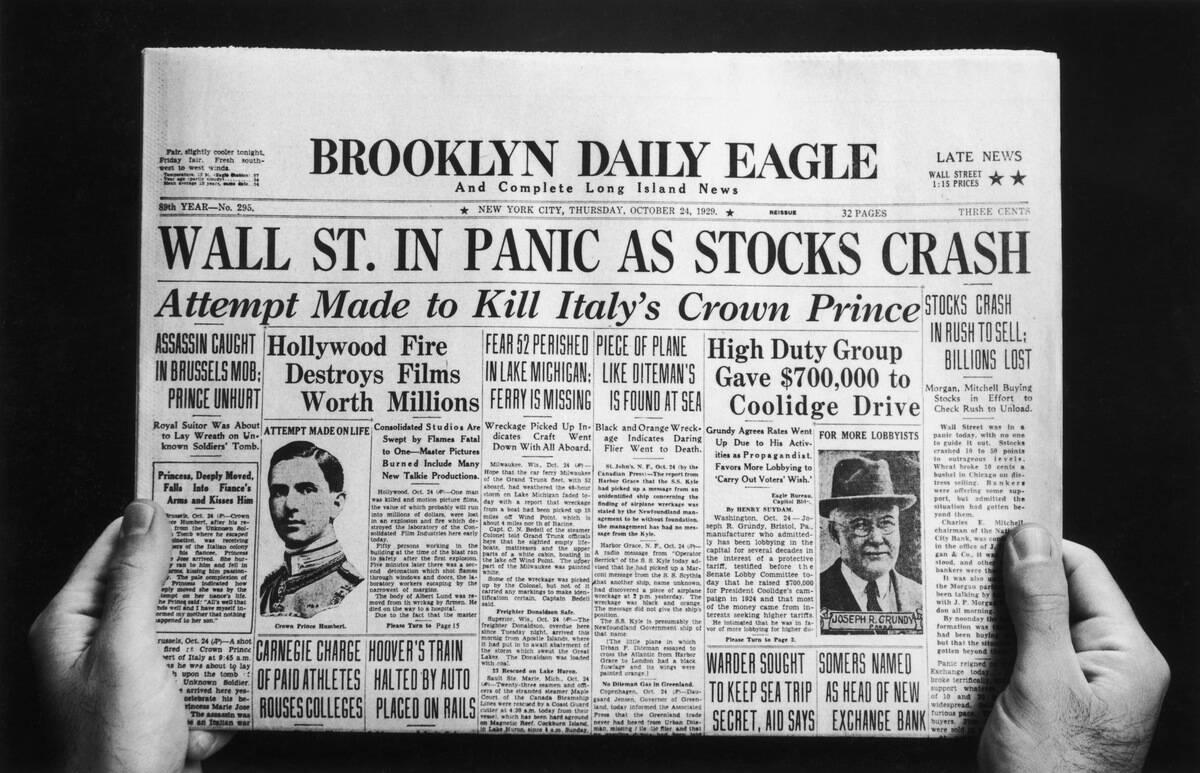
After banks collapsed and left people with their savings wiped out, it was clear that things needed to change.
The Federal Deposit Insurance Corporation was created as a response to the Depression, and ensures that money is insured (up to a certain amount) if a bank fails.
Folk heroes became popular.
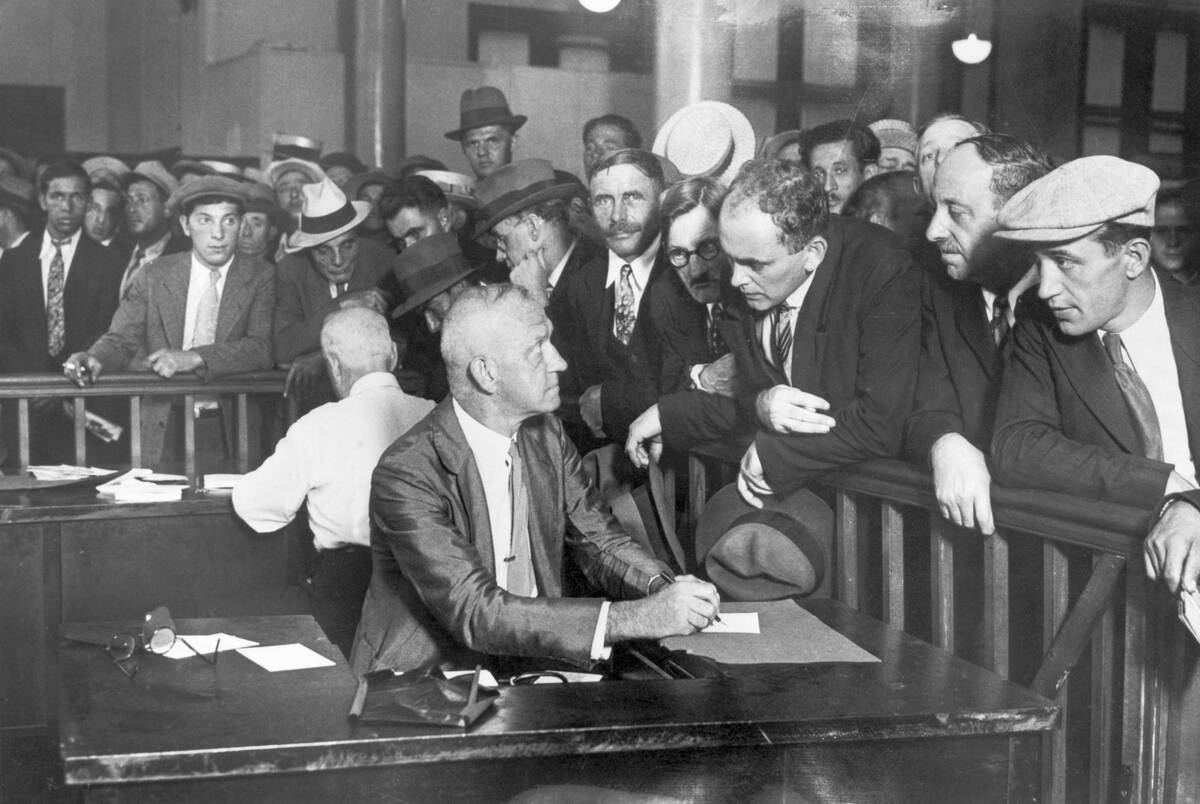
In times of great inequality like the Great Depression, Robin Hood-esque folk heroes invariably come to the forefront.
During these years, bank robbers like Bonnie and Clyde, John Dillinger, and others captured the public imagination with their daring exploits.
Businesses catered to the poor.
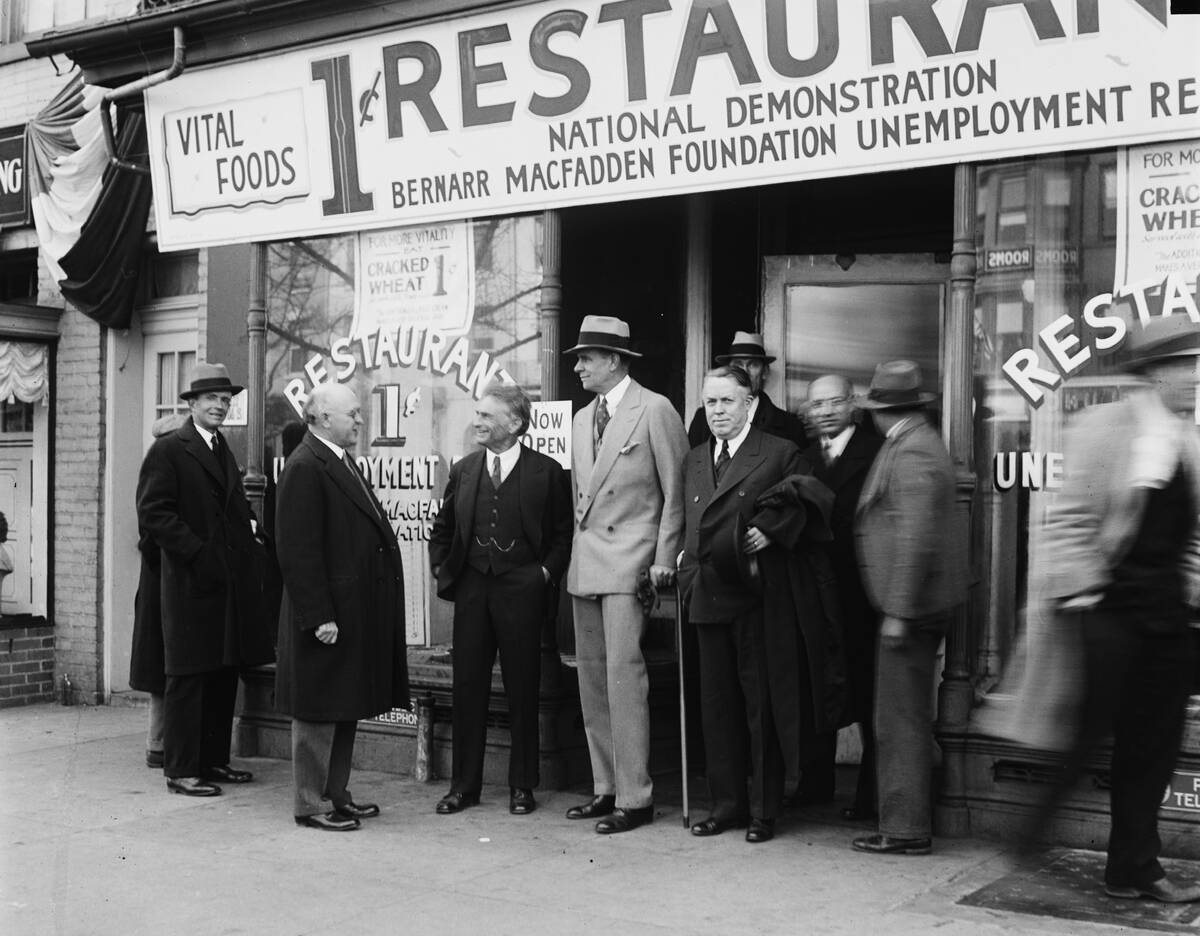
Soup kitchens and charitable initiatives provided free meals to the needy, but those with an entrepreneurial mind also created low-priced restaurants for those who still had a little bit of money.
This One-Cent, or Penny, restaurant, was exactly what it sounds like: A restaurant that charged a penny per food item. For reference, one cent in 1935 would be worth about 23 cents in 2025.
Prohibition ended in 1933.
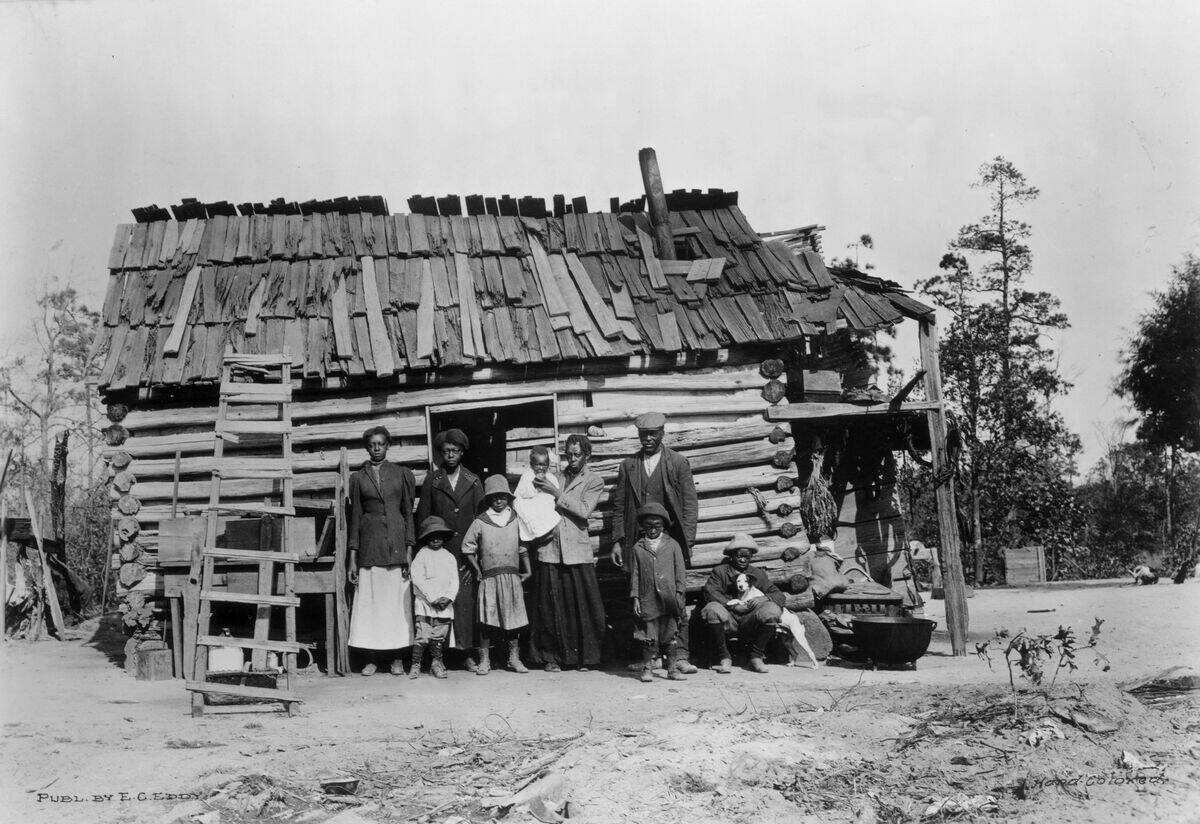
This came about at an opportune time for some people, as their financial situation all but demanded a stiff drink.
This thirst led to a quick bounce-back for the alcohol industry, as brewers and distillers were quick to scale their operations up to meet the demand.
Breadwinners were out of work.
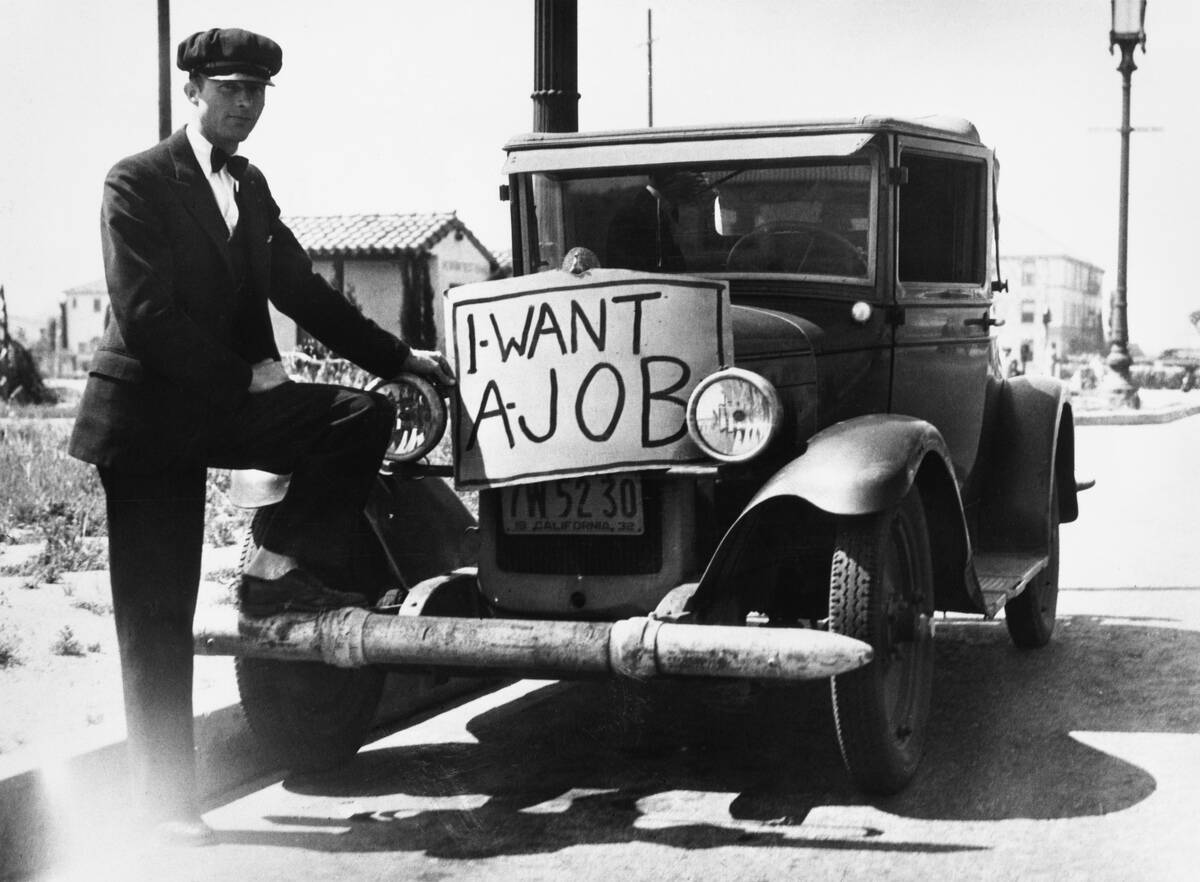
American culture was still built around men being the breadwinners for their family, and would remain this way for decades to come.
Regardless, with so many men out of work, women were forced to pick up the slack by taking odd jobs as seamstresses, secretaries, or teachers.
Racism was a massive barrier.
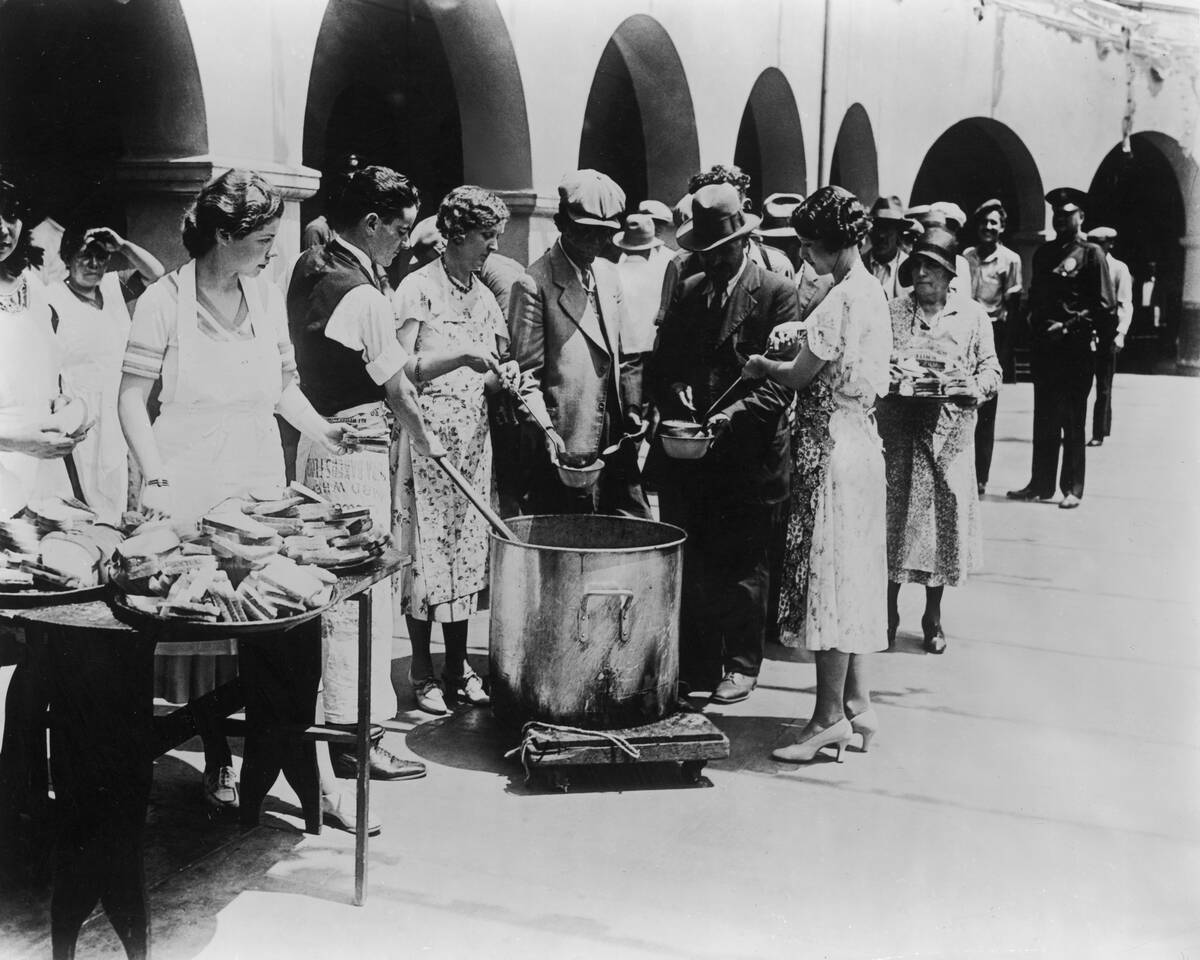
Racism and bigotry still loomed large during this era, with many southern states officially practicing segregation.
While the Depression affected millions of Americans from all walks of life, it his African Americans particularly hard. In many cases, they were the first to lose their jobs.
Women were pushed into bread-winning roles.
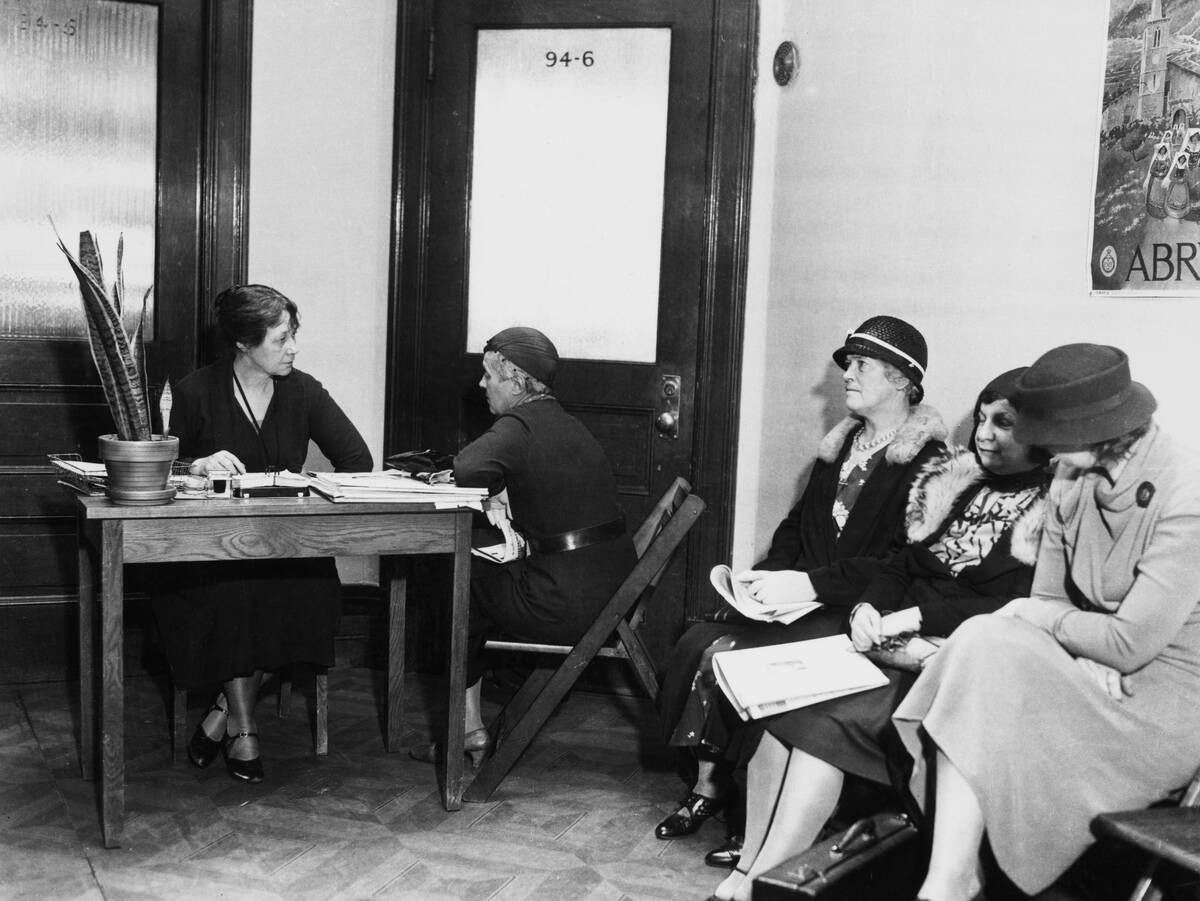
While traditional households of the 1930s generally had a man as the sole breadwinner and a woman as a housekeeper, this dynamic was upended by the Great Depression.
Many women found themselves applying for professional training or work camps in an effort to alleviate the lost income from their laid-off husbands.
“Brother, Can You Spare a Dime?”
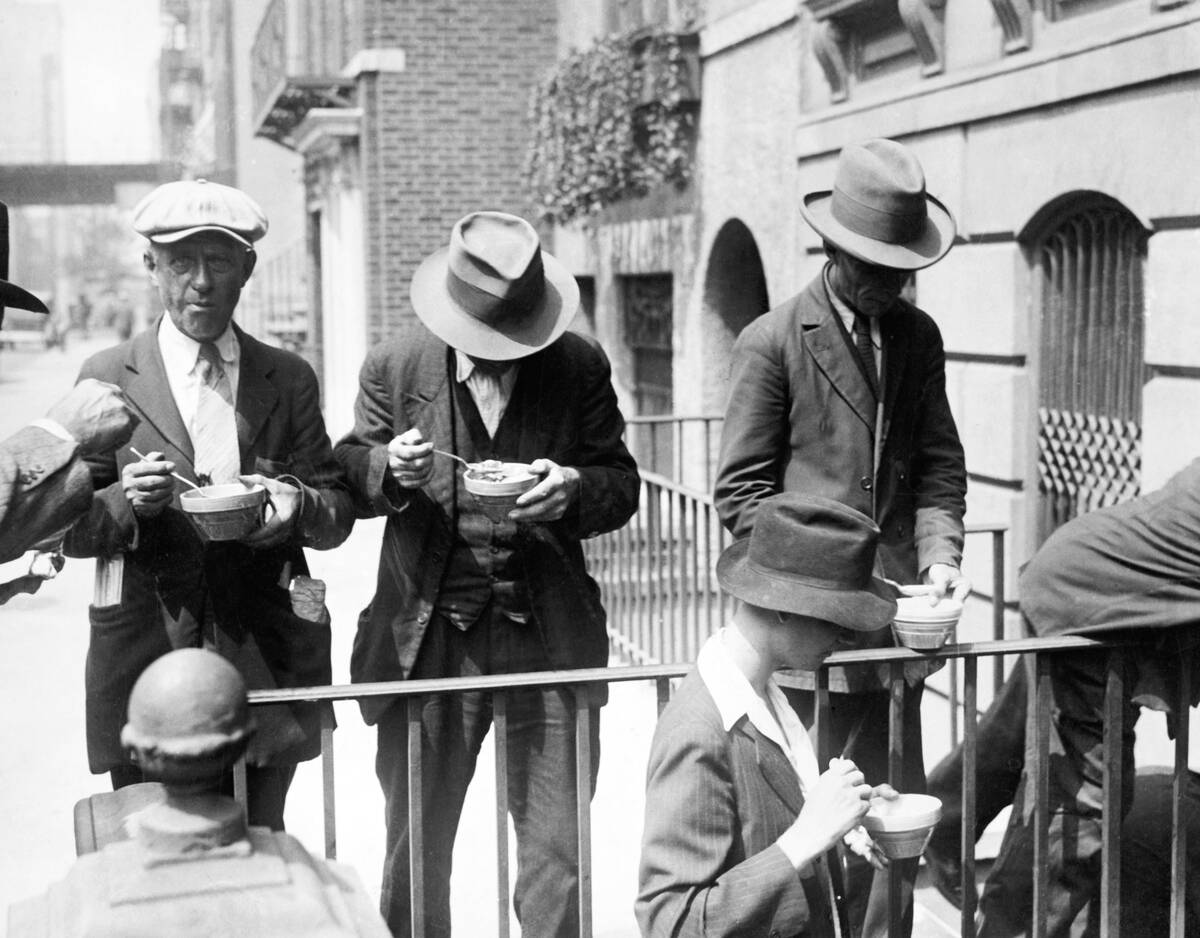
The song, “Brother, Can You Spare a Dime?” became an unofficial anthem and catchphrase of the Great Depression.
The lyrics depicted a man who had worked hard and fought for his country, only to be left with nothing. Needless to say, the message hit home for a lot of people.
It affected fashion as well.
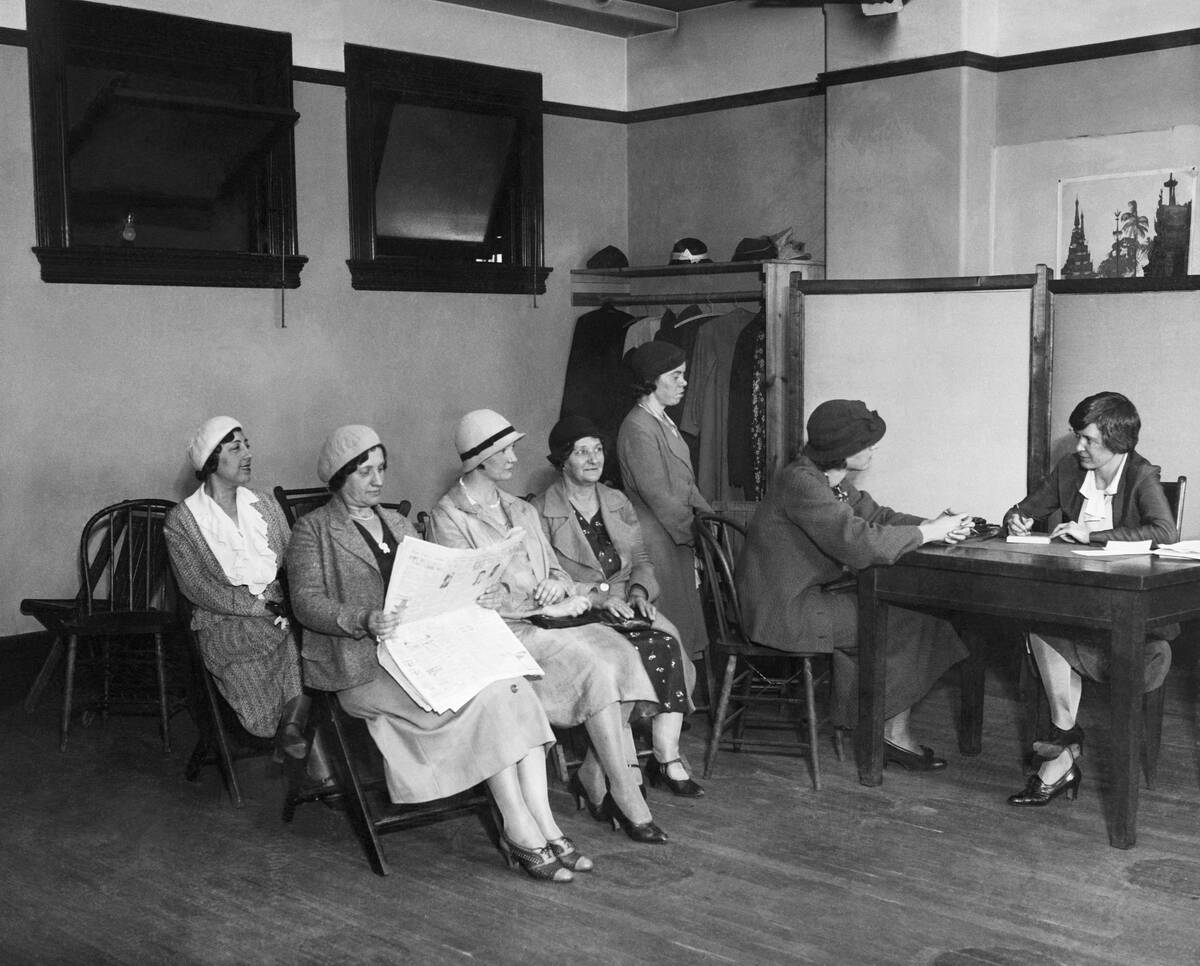
The 1920s were full of avant-garde designs, ranging from art deco flourishes in architecture to daring flapper styles for women’s clothing.
The Great Depression put a temporary halt to this, as people could no longer afford such luxuries. Clothes were increasingly homemade, while new construction projects were generally utilitarian in nature.
Kids felt the pinch as well.
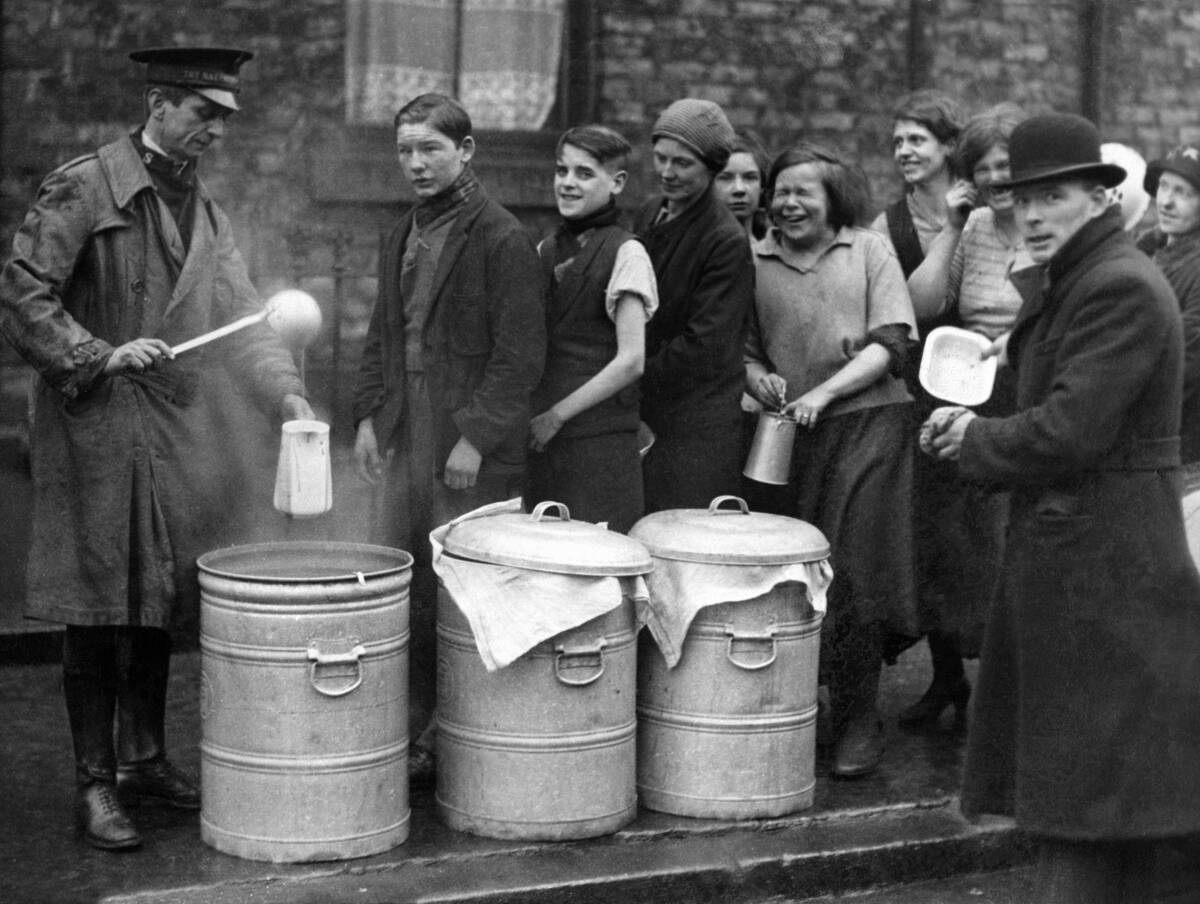
The onset of the Depression left many families with too many mouths to feed. This increased pressure on older children to either drop out of school and find a job, or leave home entirely.
Many of these runaways chose to ride the rails to better fortunes, giving rise to the culture of hoboes along rail routes.
Bartering made a comeback.
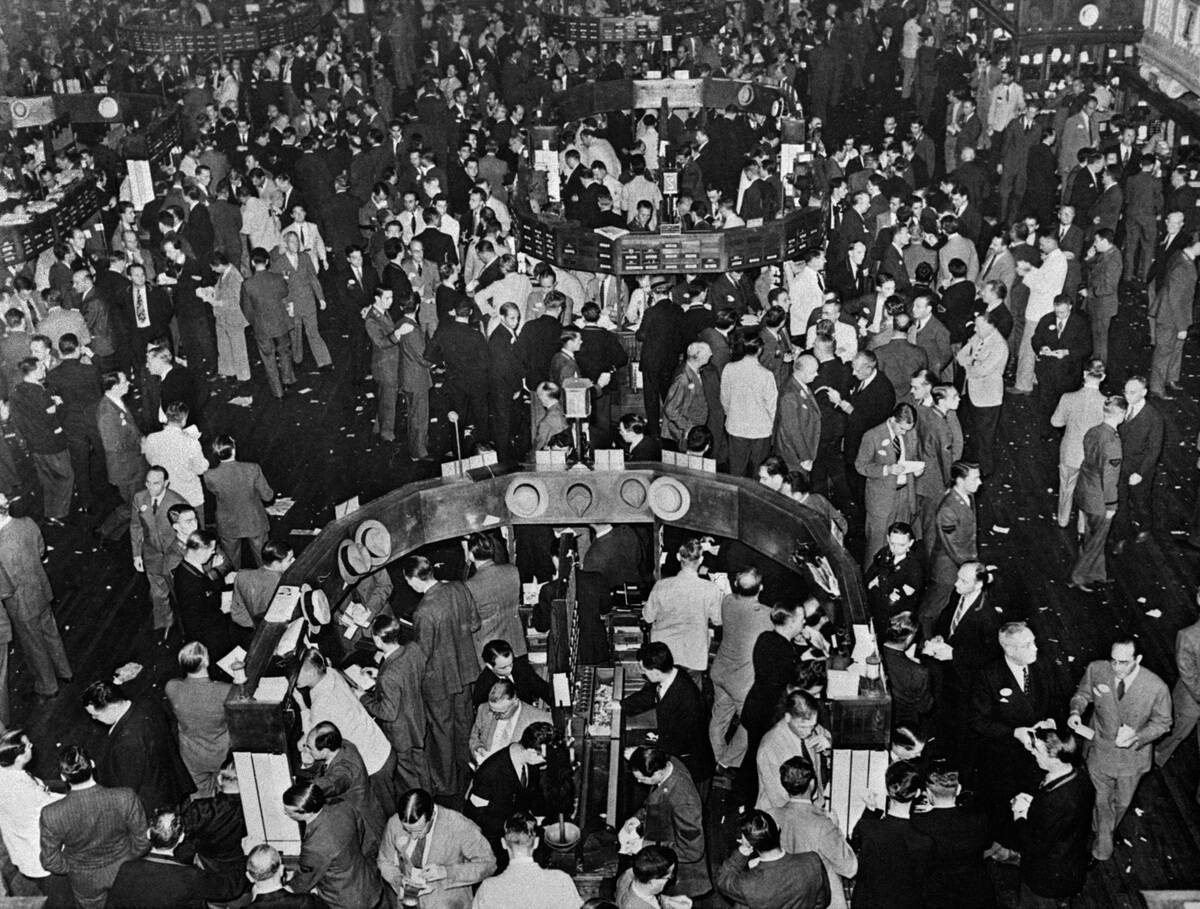
With money in short supply, combined with the volatility of inflation, many people found it easier to just go back to the old ways of bartering.
Trading goods such as eggs, bread, and firewood, or services like sewing, made a big comeback during this time.
Families became more crowded.
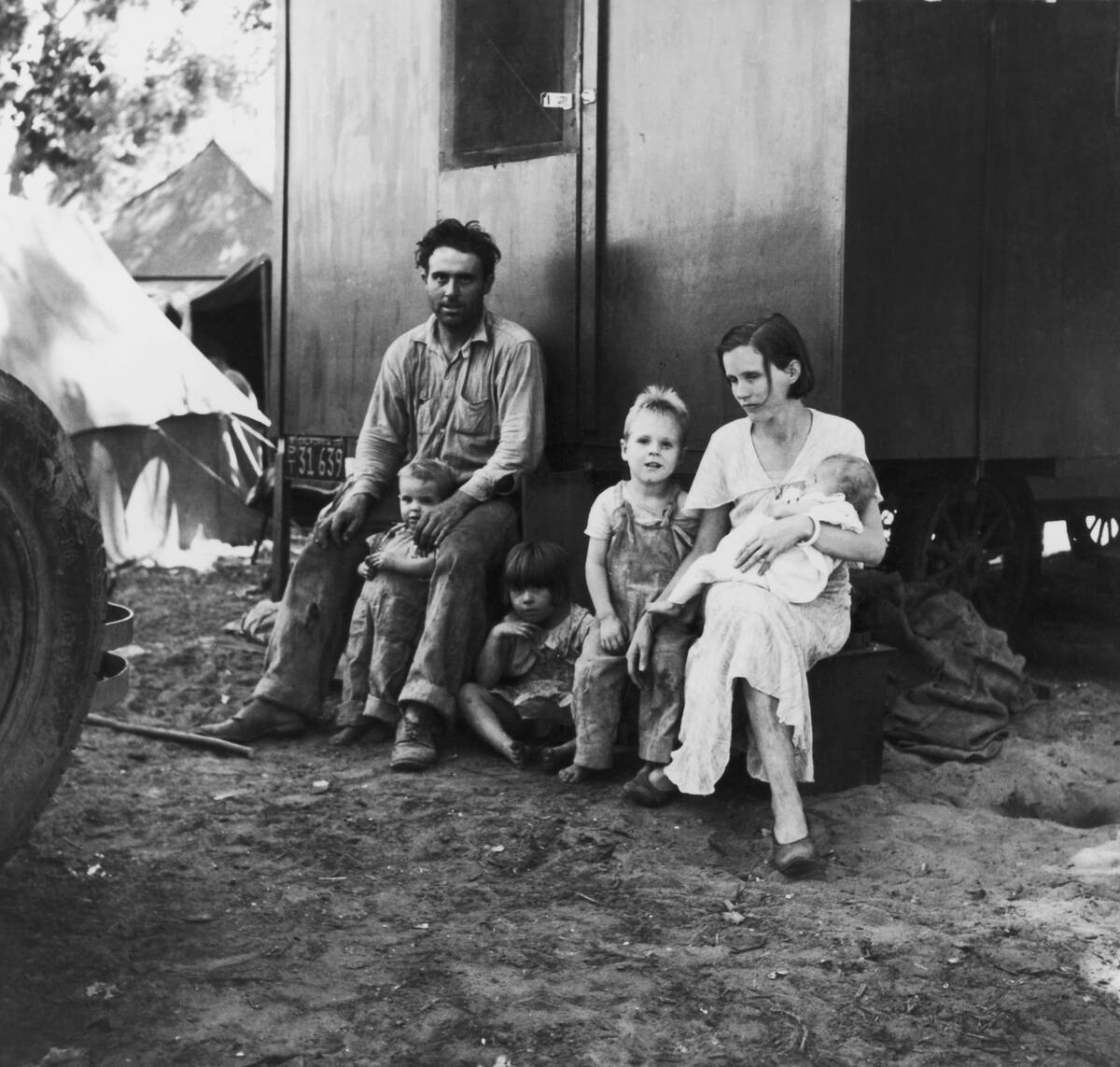
Conditions made it increasingly untenable for families to afford much living space, and this led to many people moving in with relatives to save money.
In some cases, three or four generations of the same family would crowd into the same house.
For entertainment, listen to the radio.
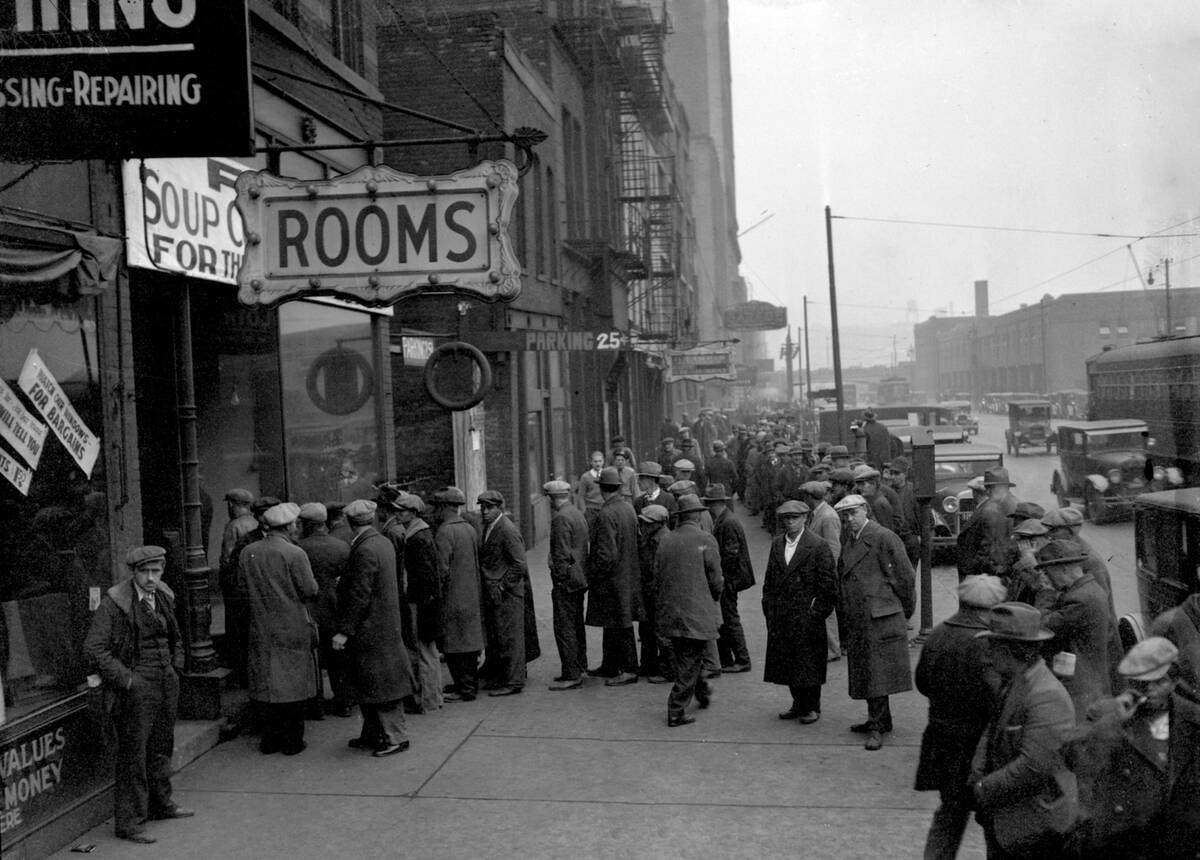
Radio was still a relatively new and novel technology during the era, and the Depression saw an explosion of radio comedies, dramas, and news hit the airwaves.
Going to the movies cost money, but listening to the radio was effectively free, which helps explain the phenomenon.
Divorce rates dropped.
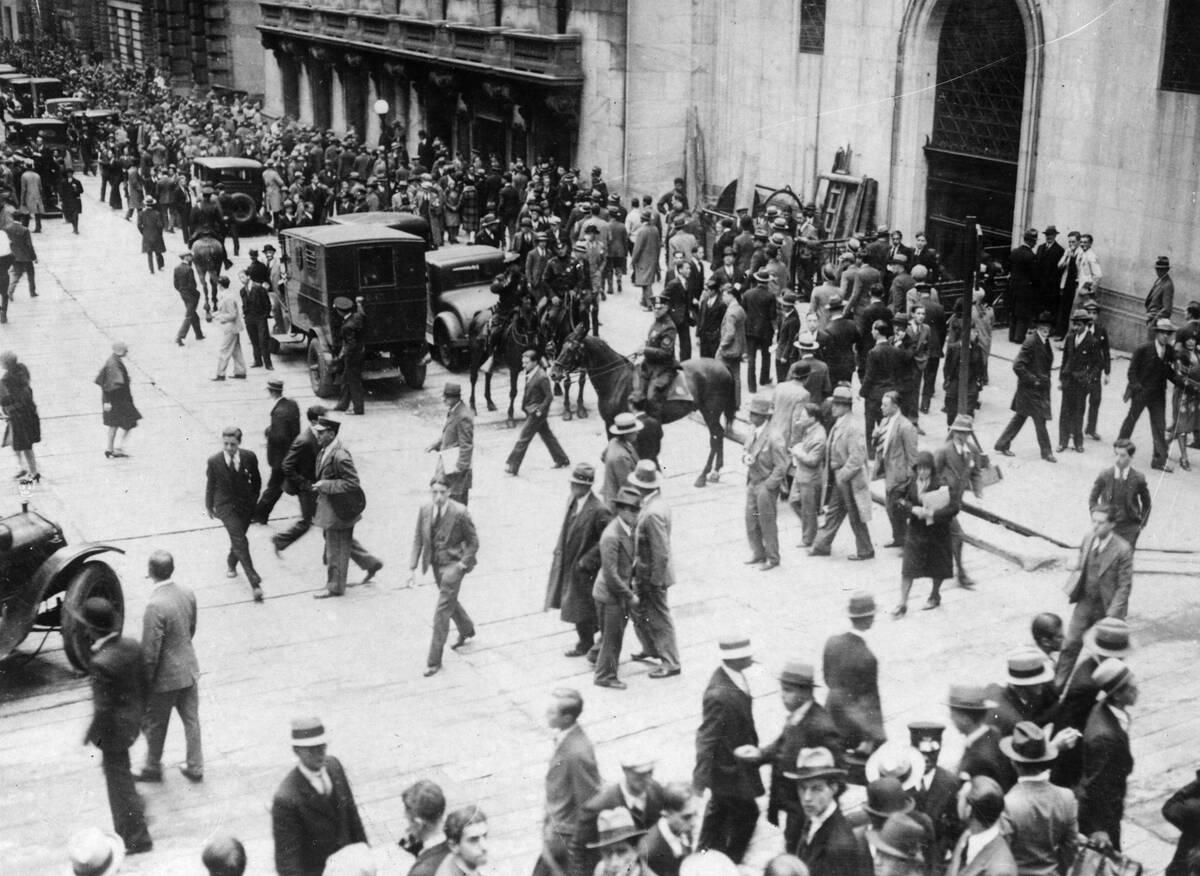
There’s little doubt that the Great Depression caused significant marital strain across the country, but despite this, divorce rates actually dropped.
This owes more to the fact that people simply couldn’t afford to split up than it does to marital harmony, of course.
Route 66 was the road of hope.
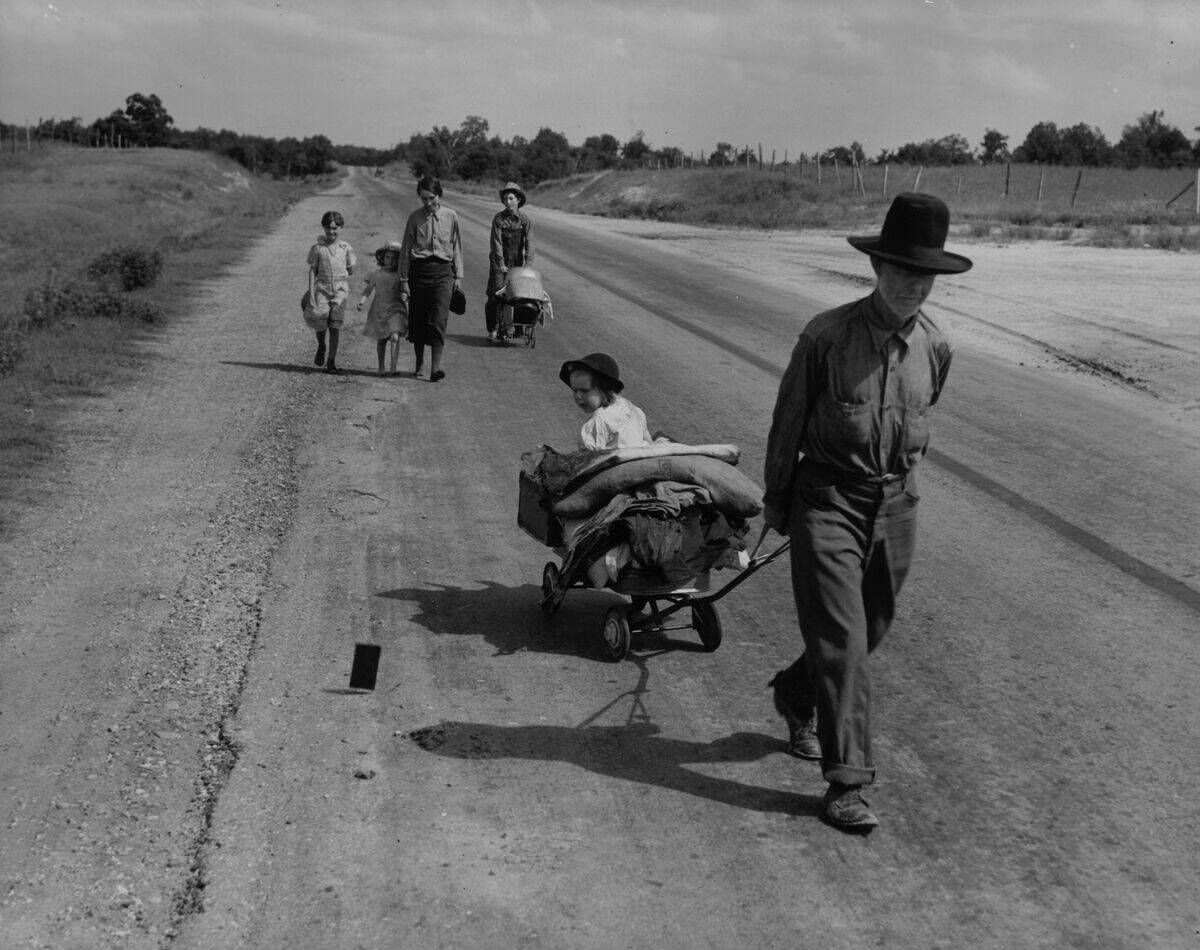
The song “(Get your kicks on) Route 66” had not been written yet, but Route 66 was still top of mind for Americans seeking a better life.
The highway became the main route for people leaving the eastern and central portions of the country as they headed west.
It didn’t really end until World War II.
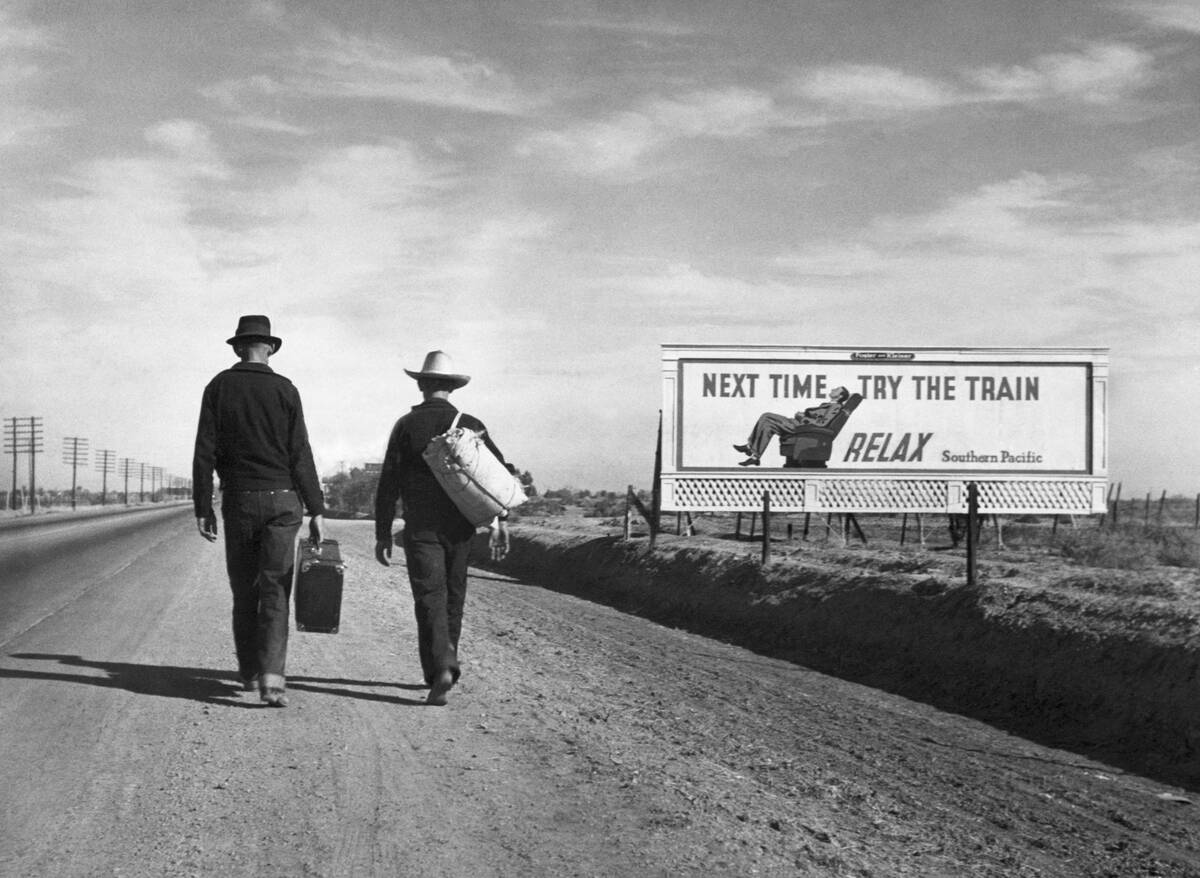
While the worst effects of the Depression eased over time, it wasn’t until World War II that the Great Depression was truly over.
The war created jobs as factories needed workers and the military needed supplies, which kick-started the economy.
